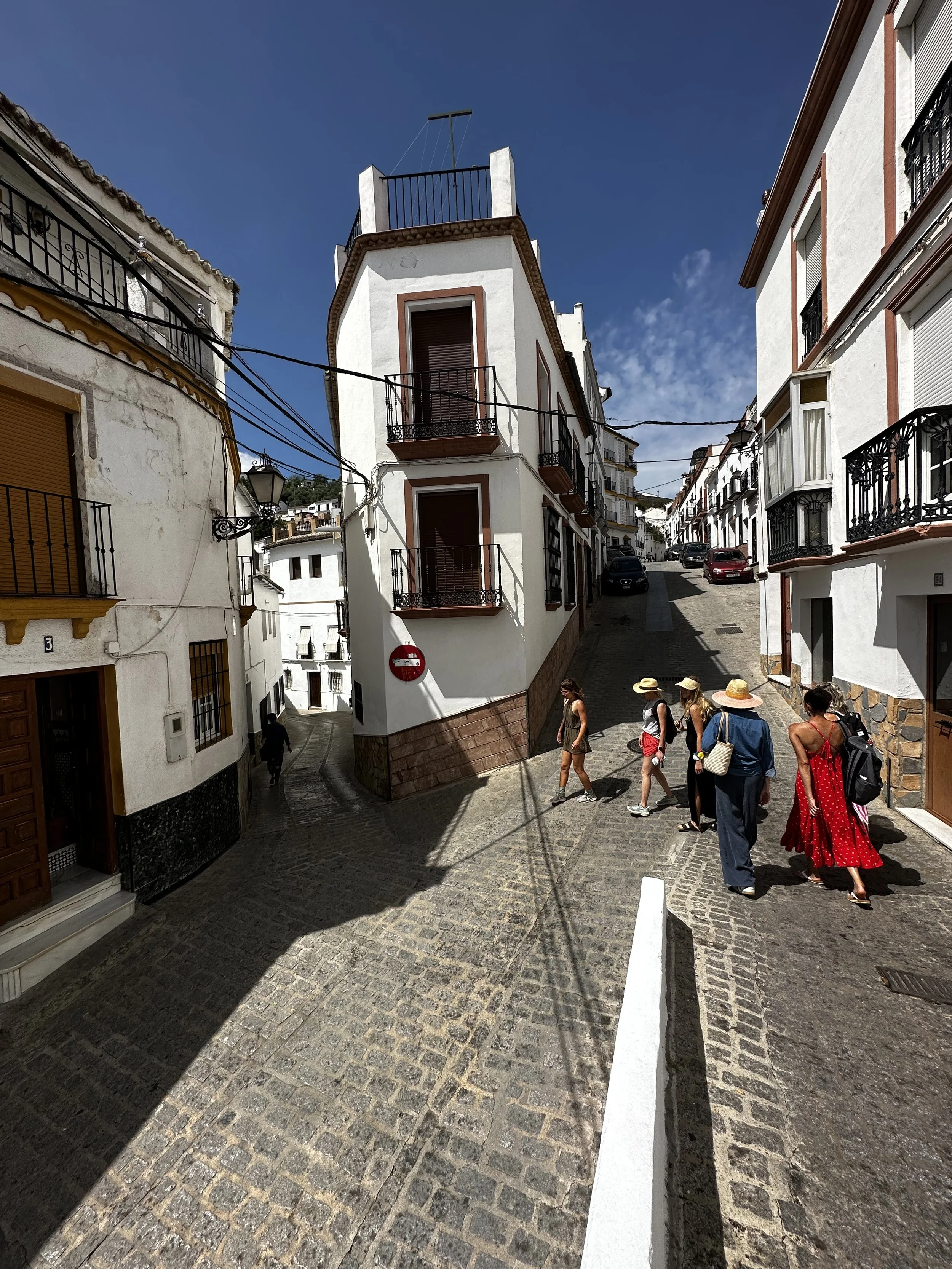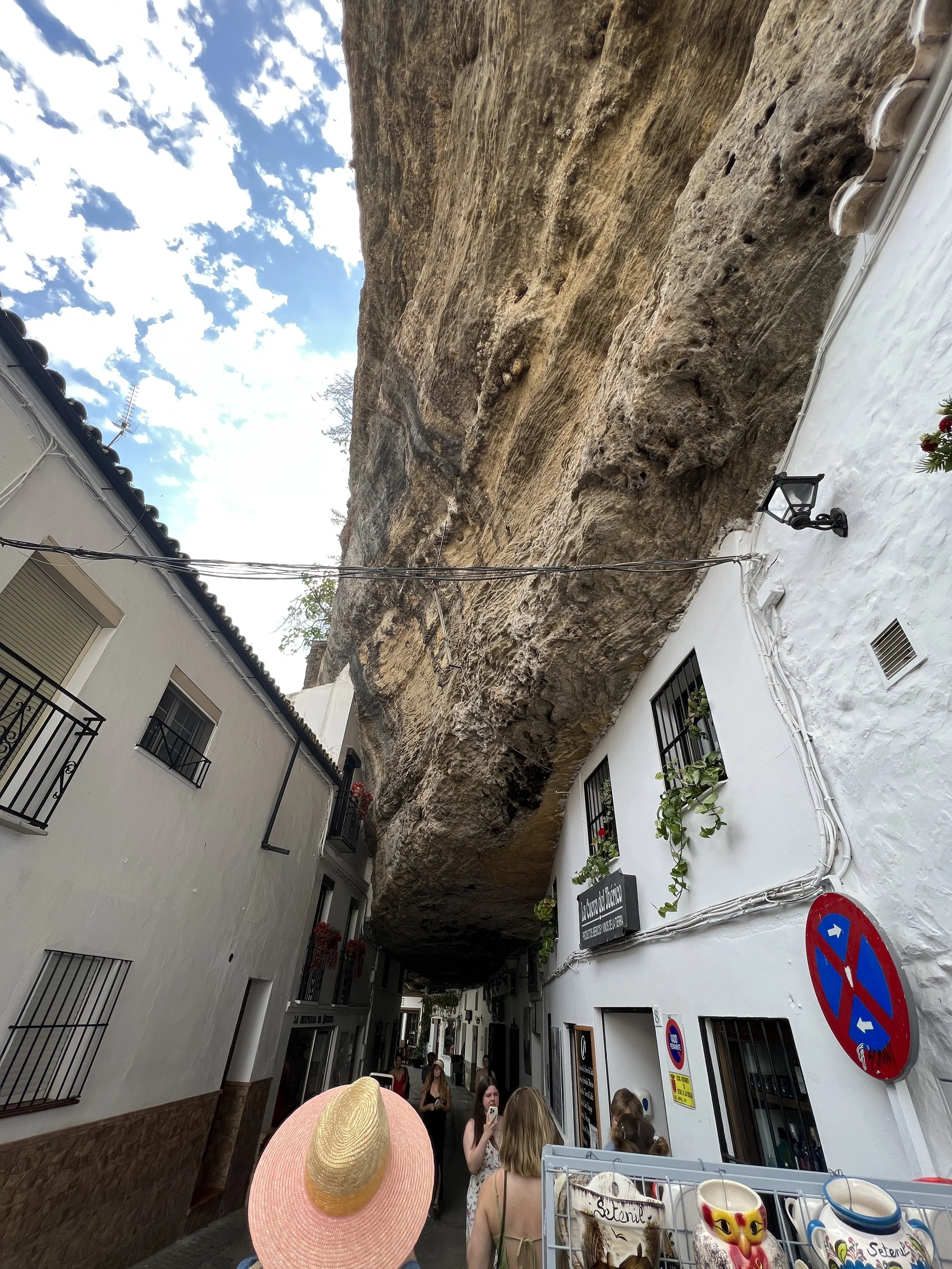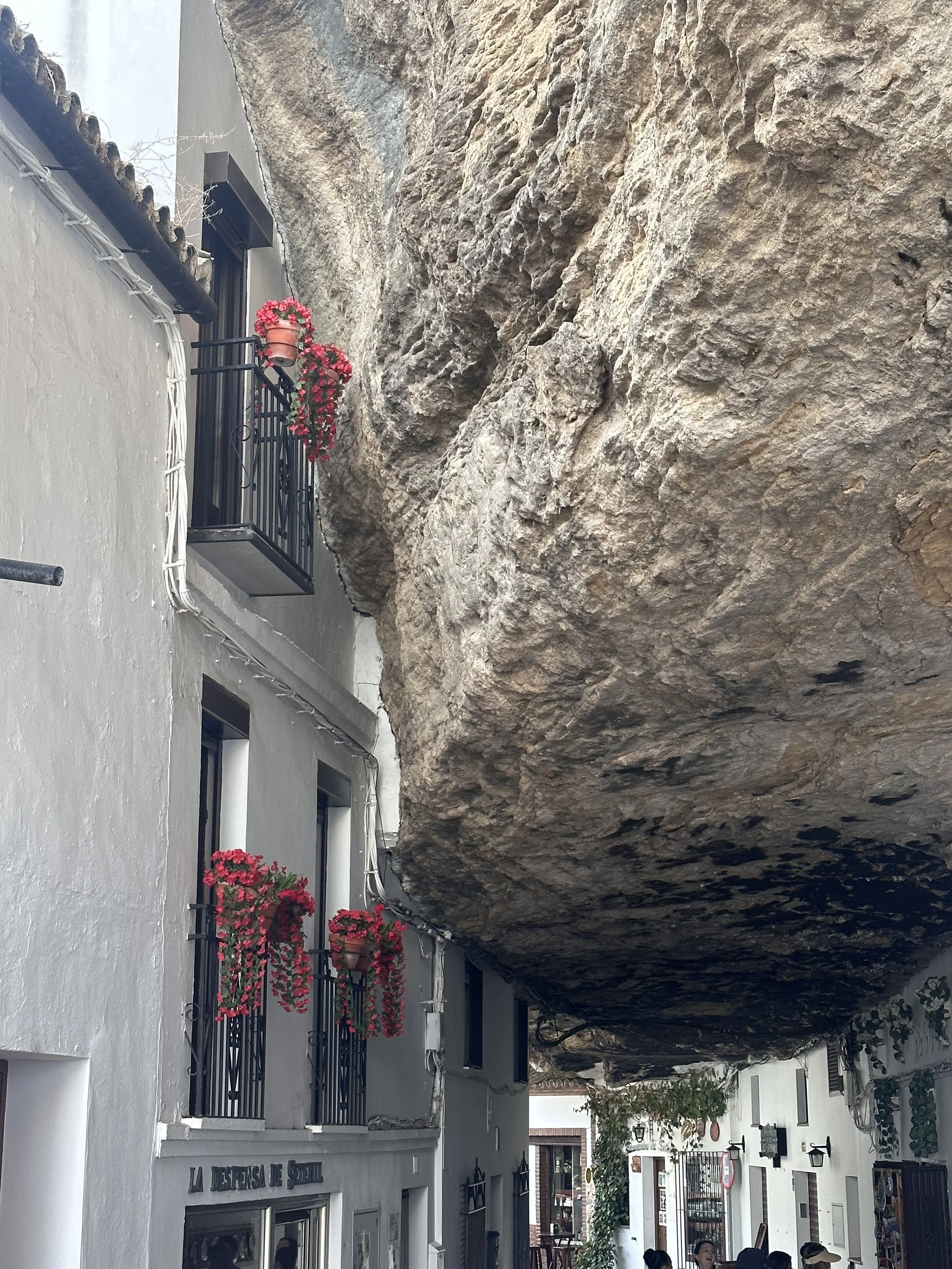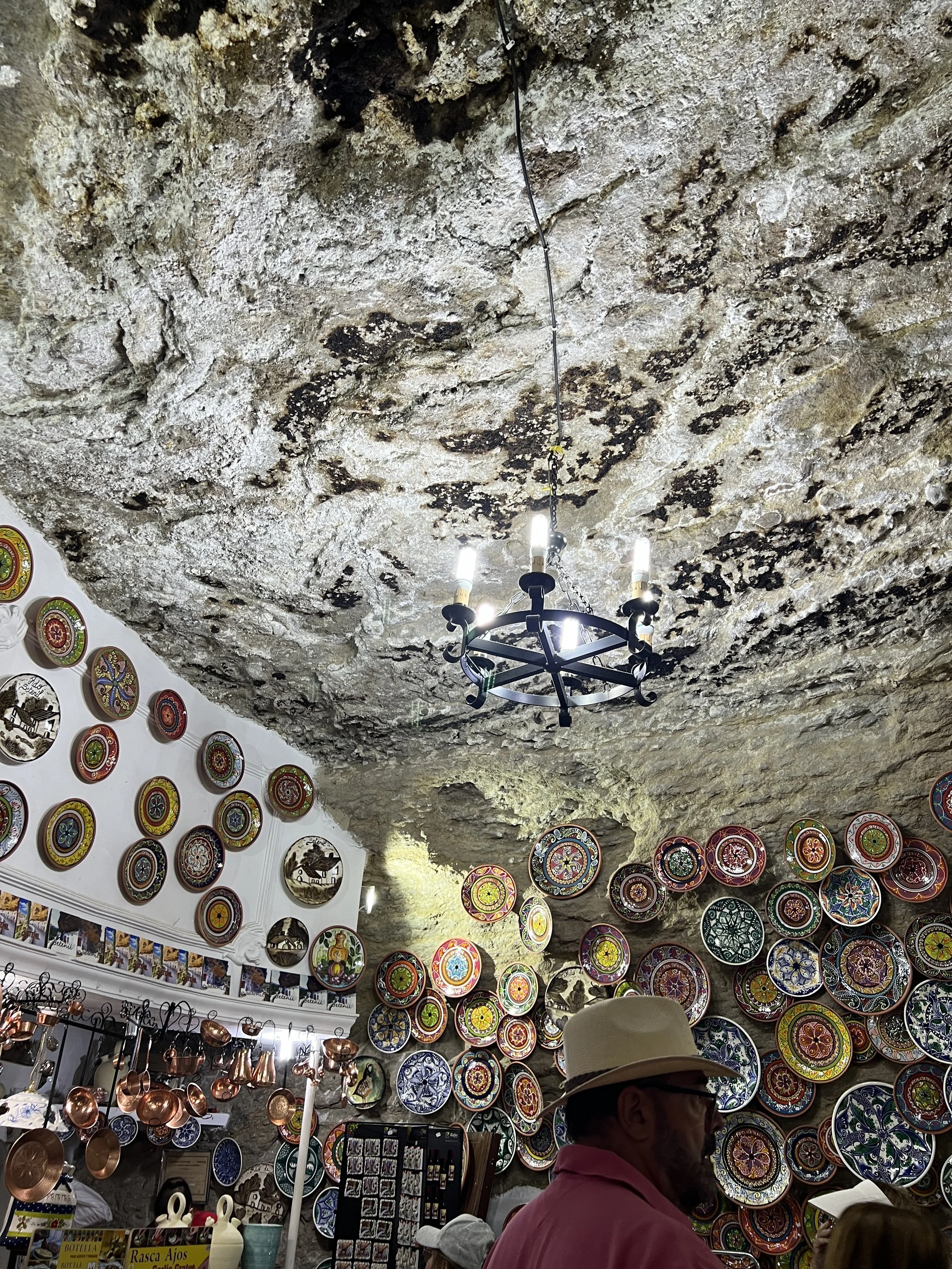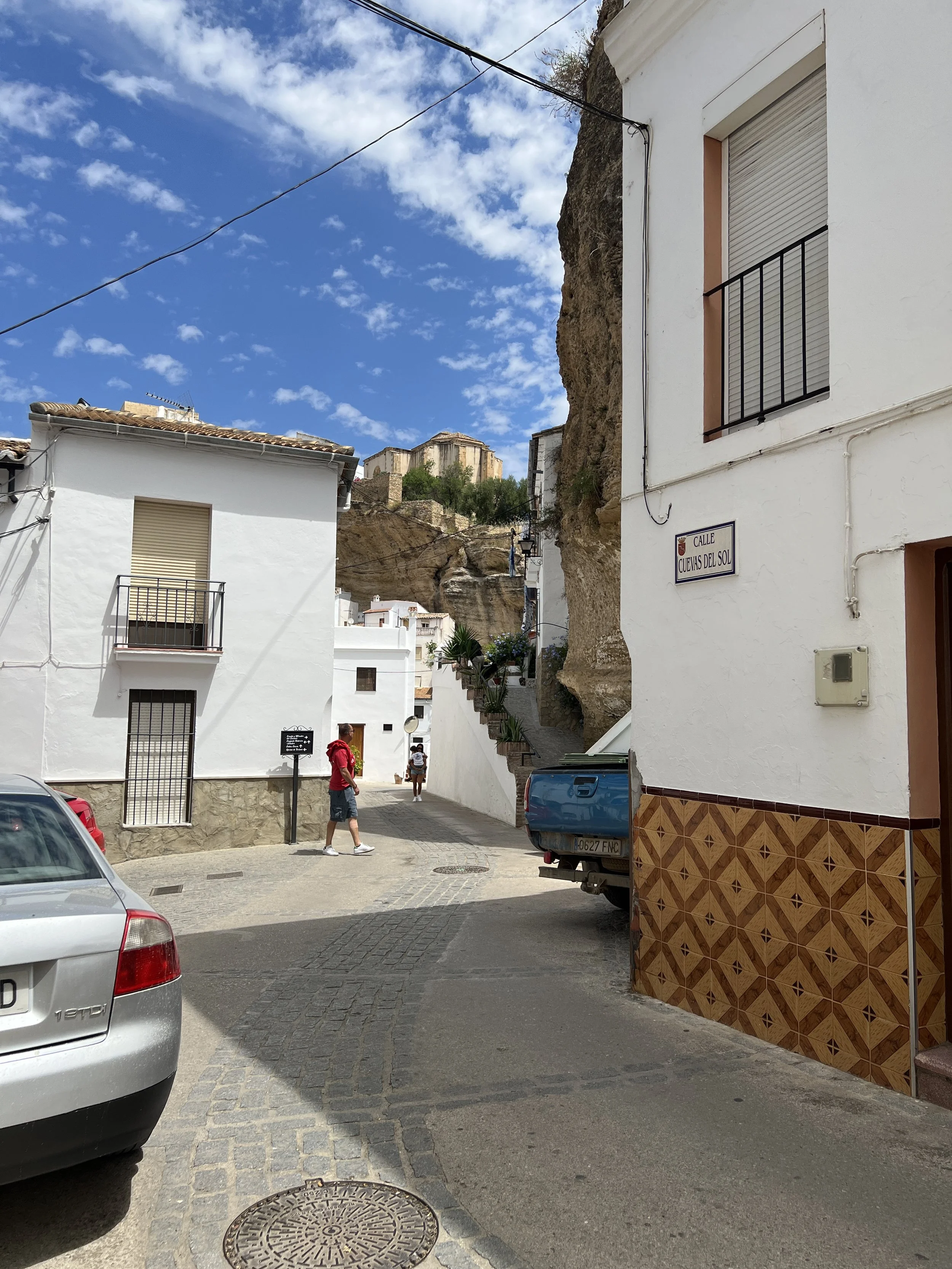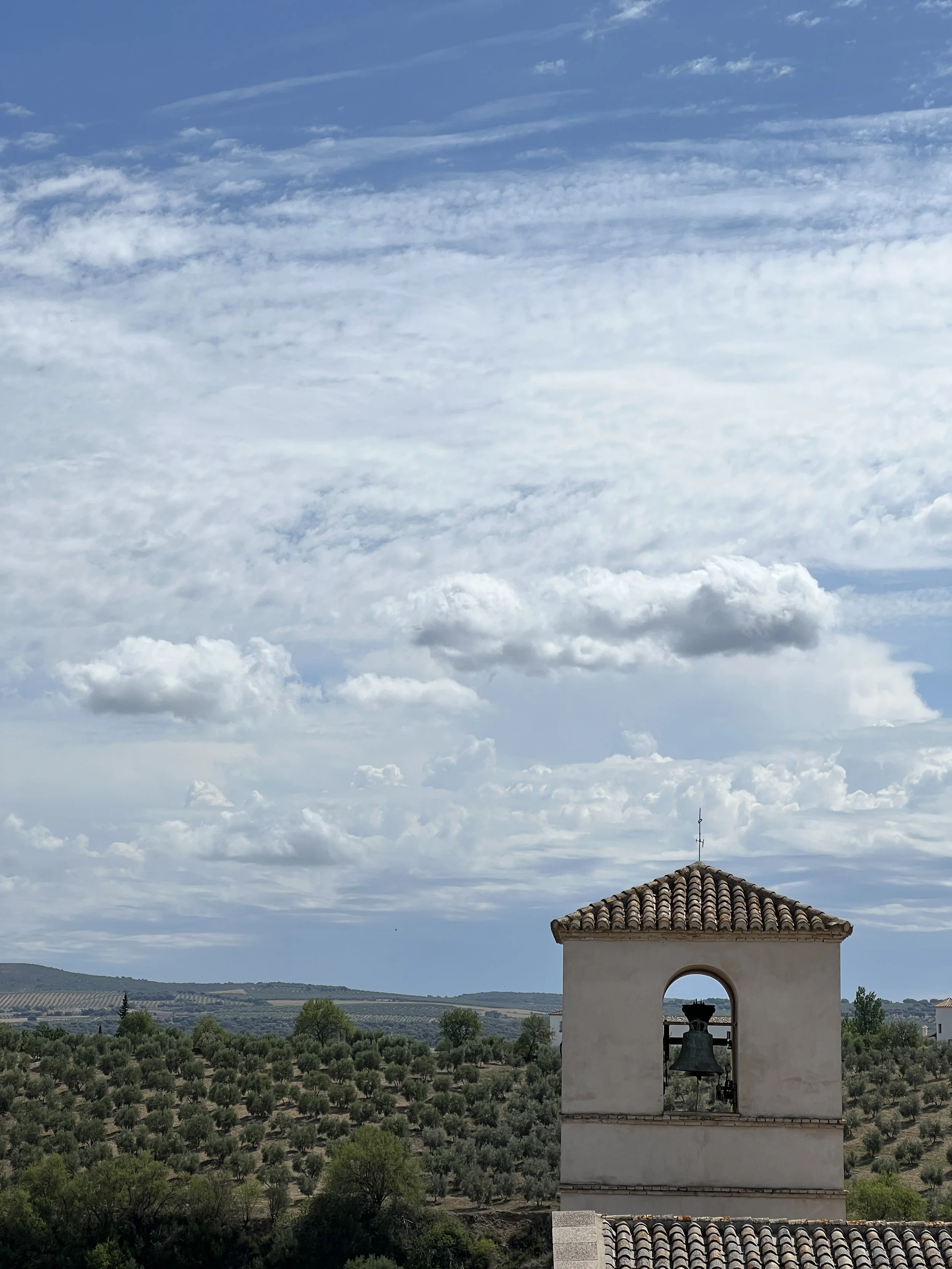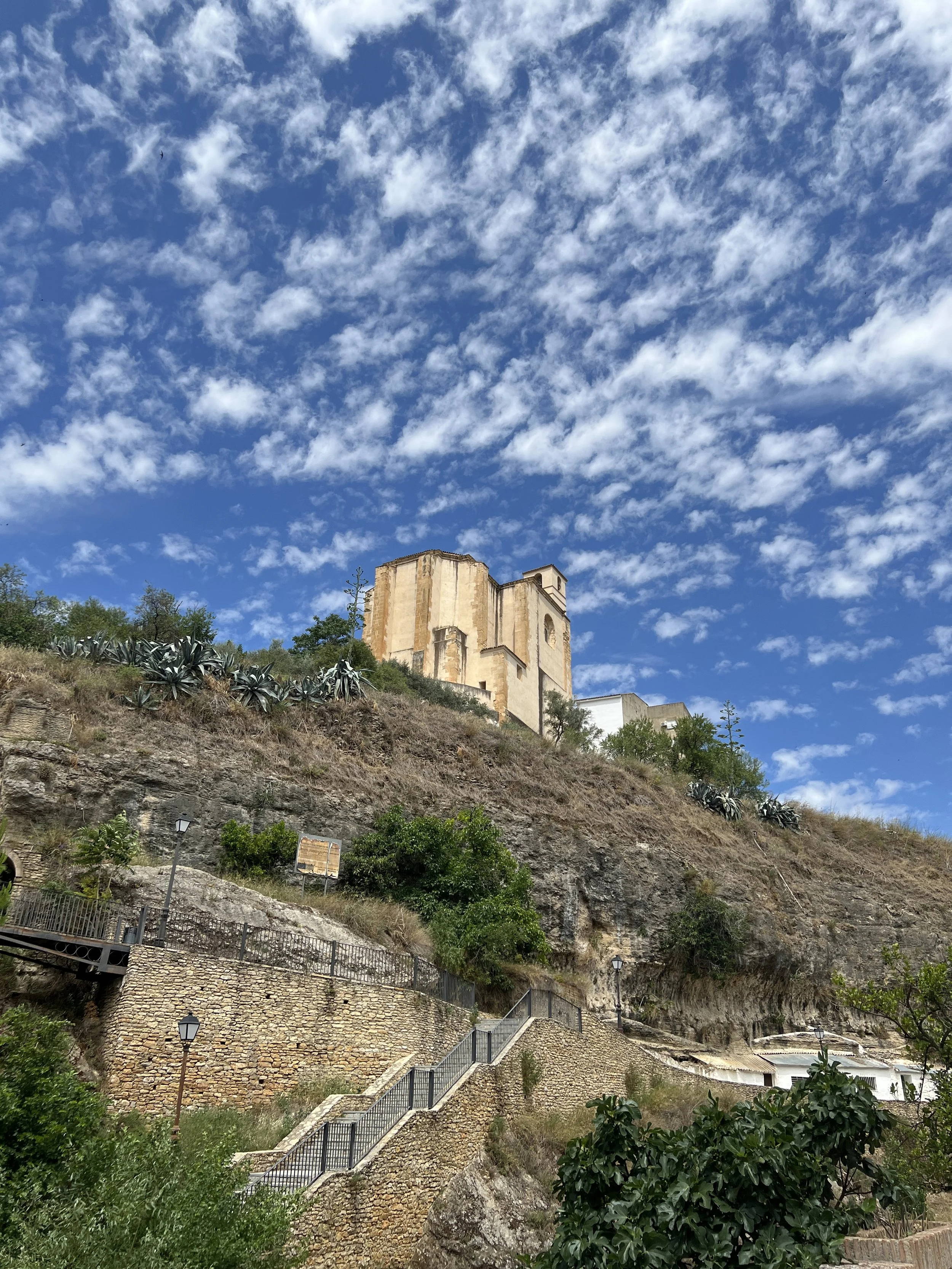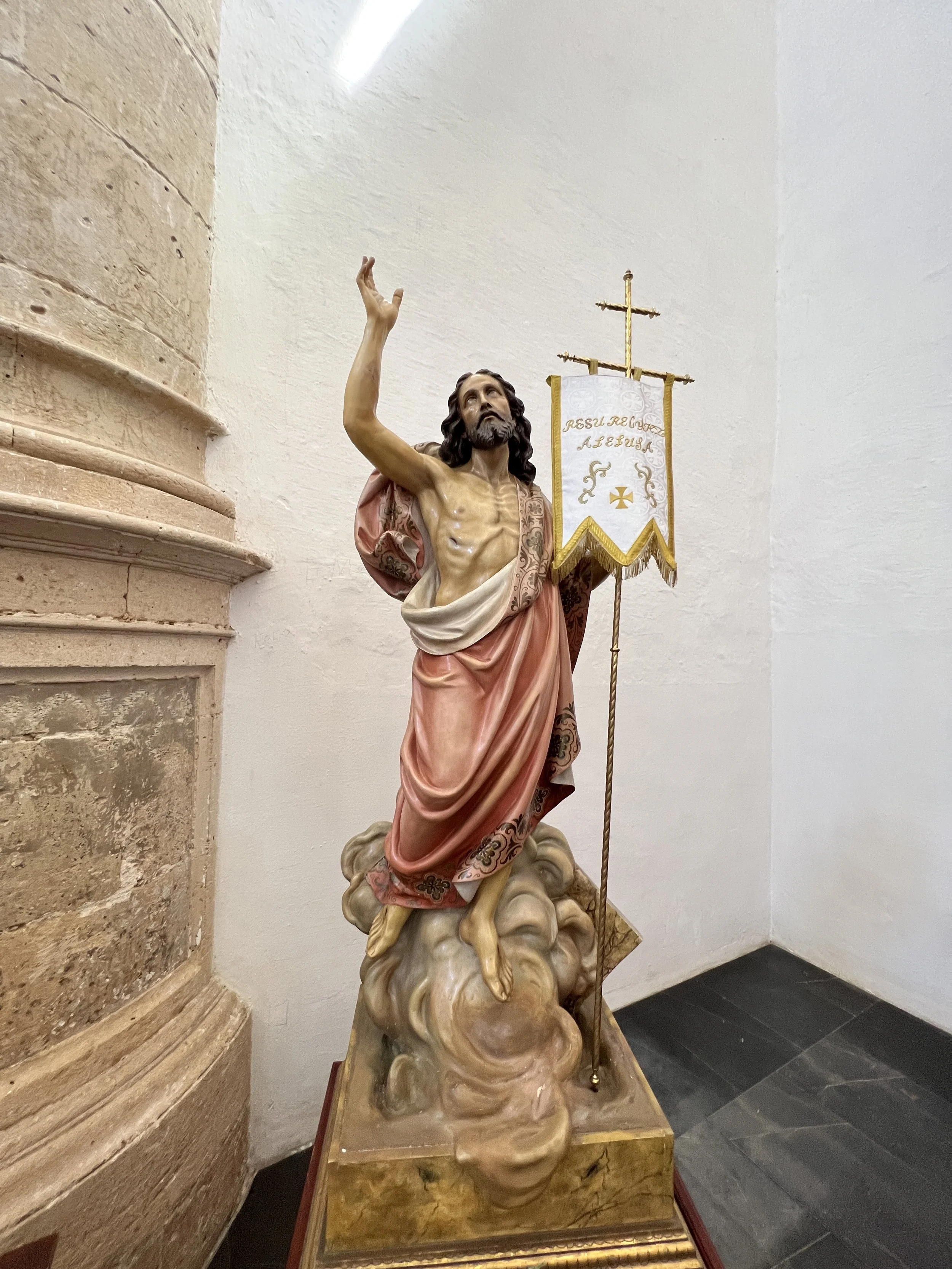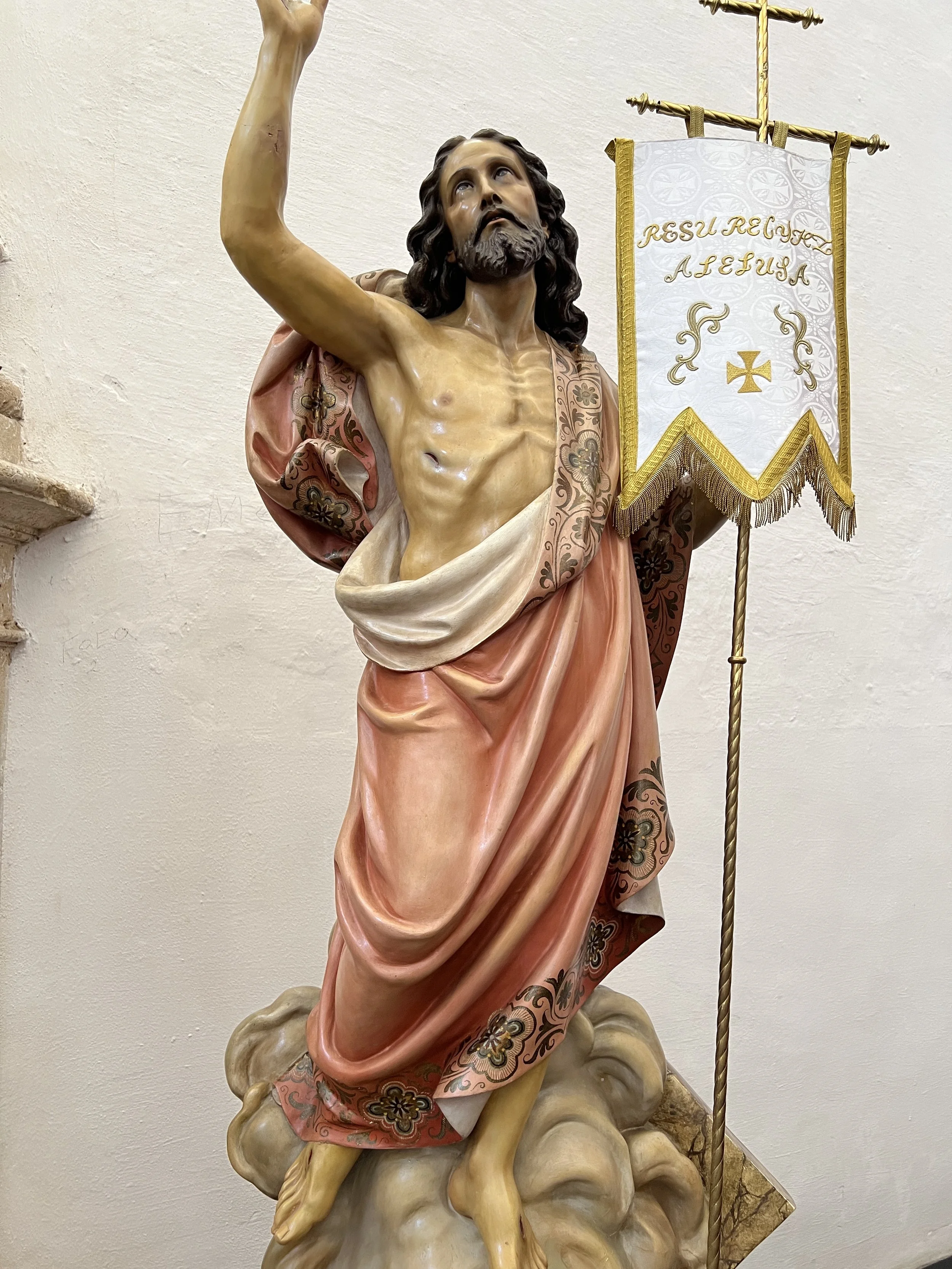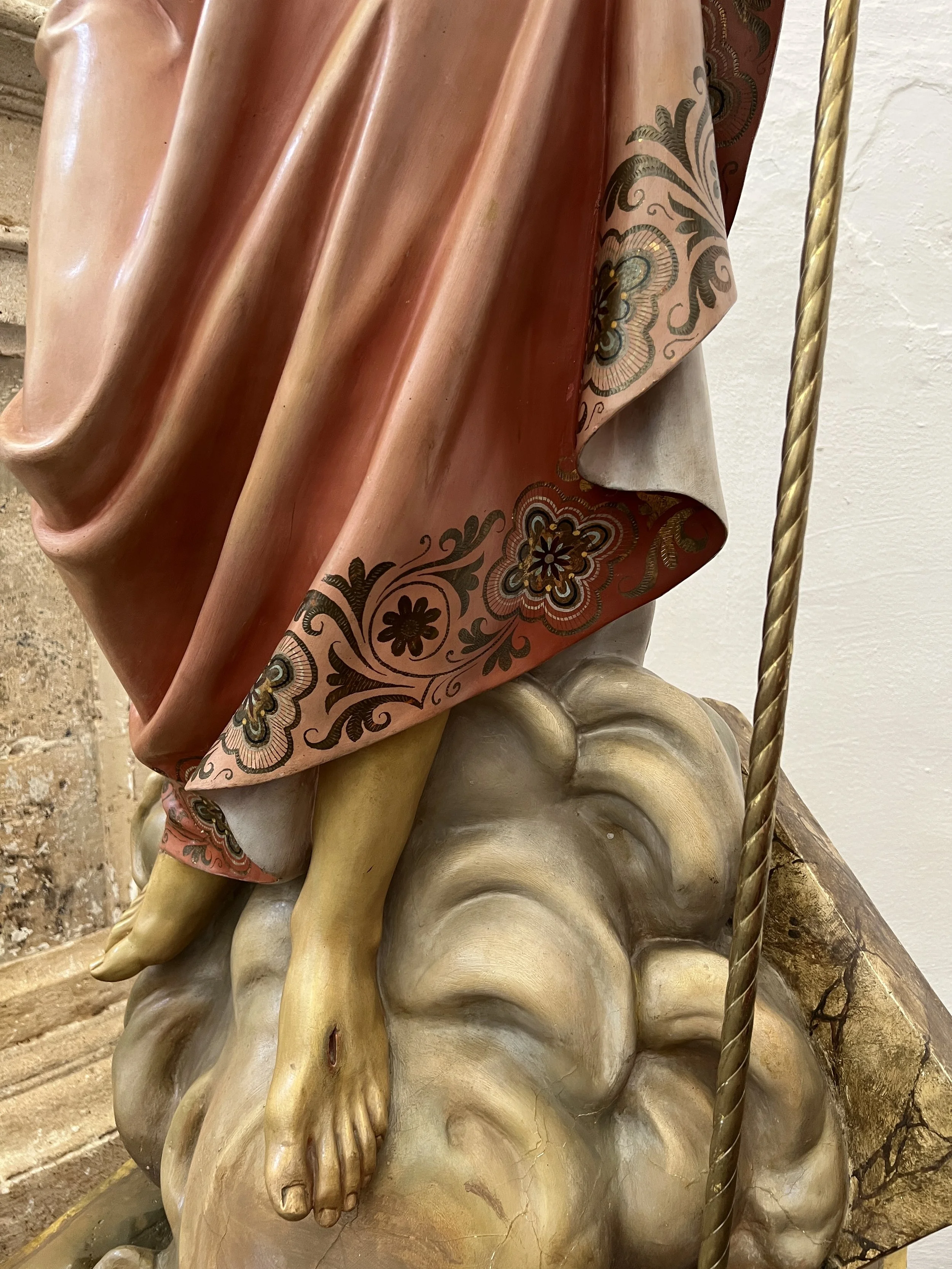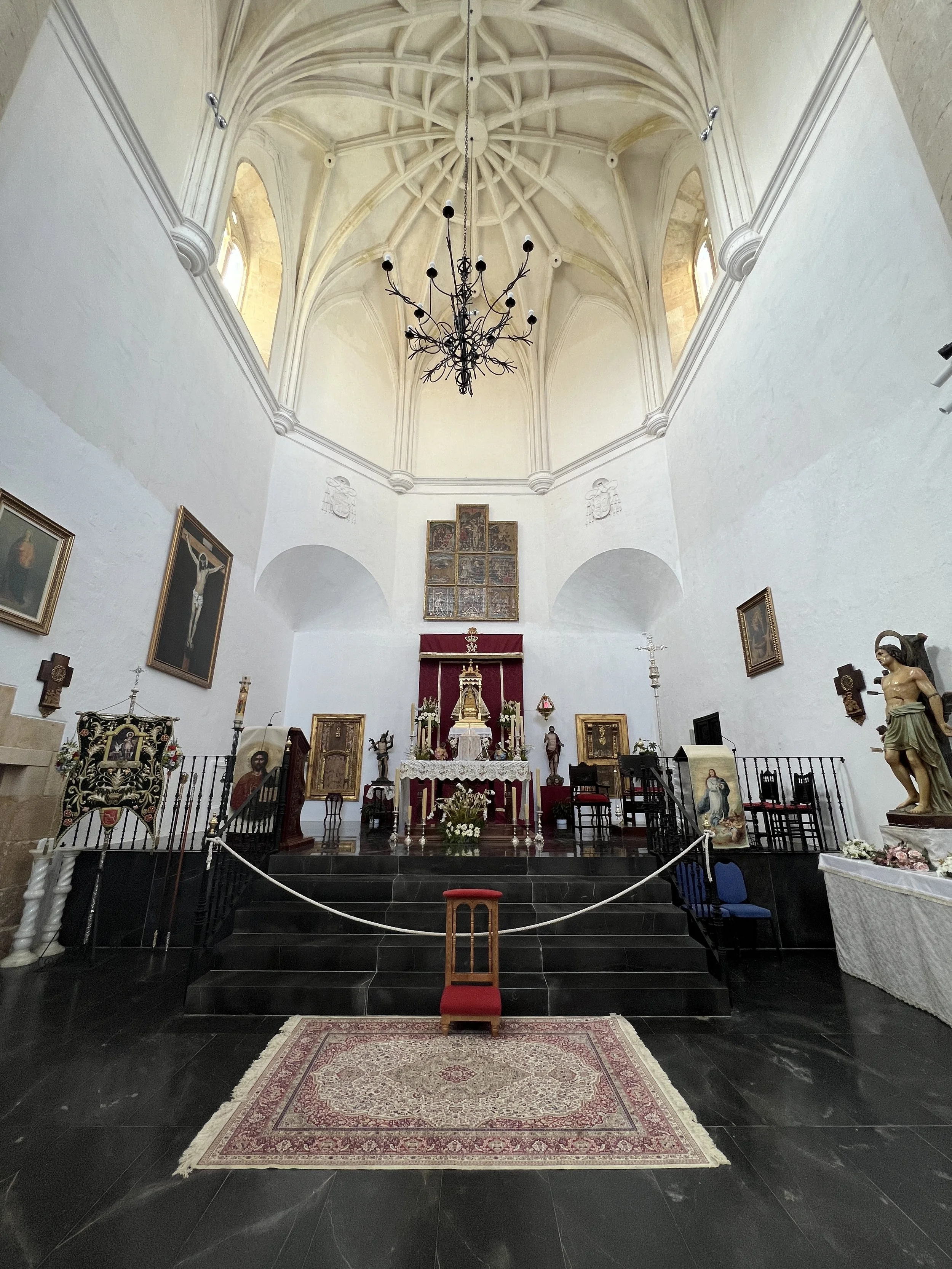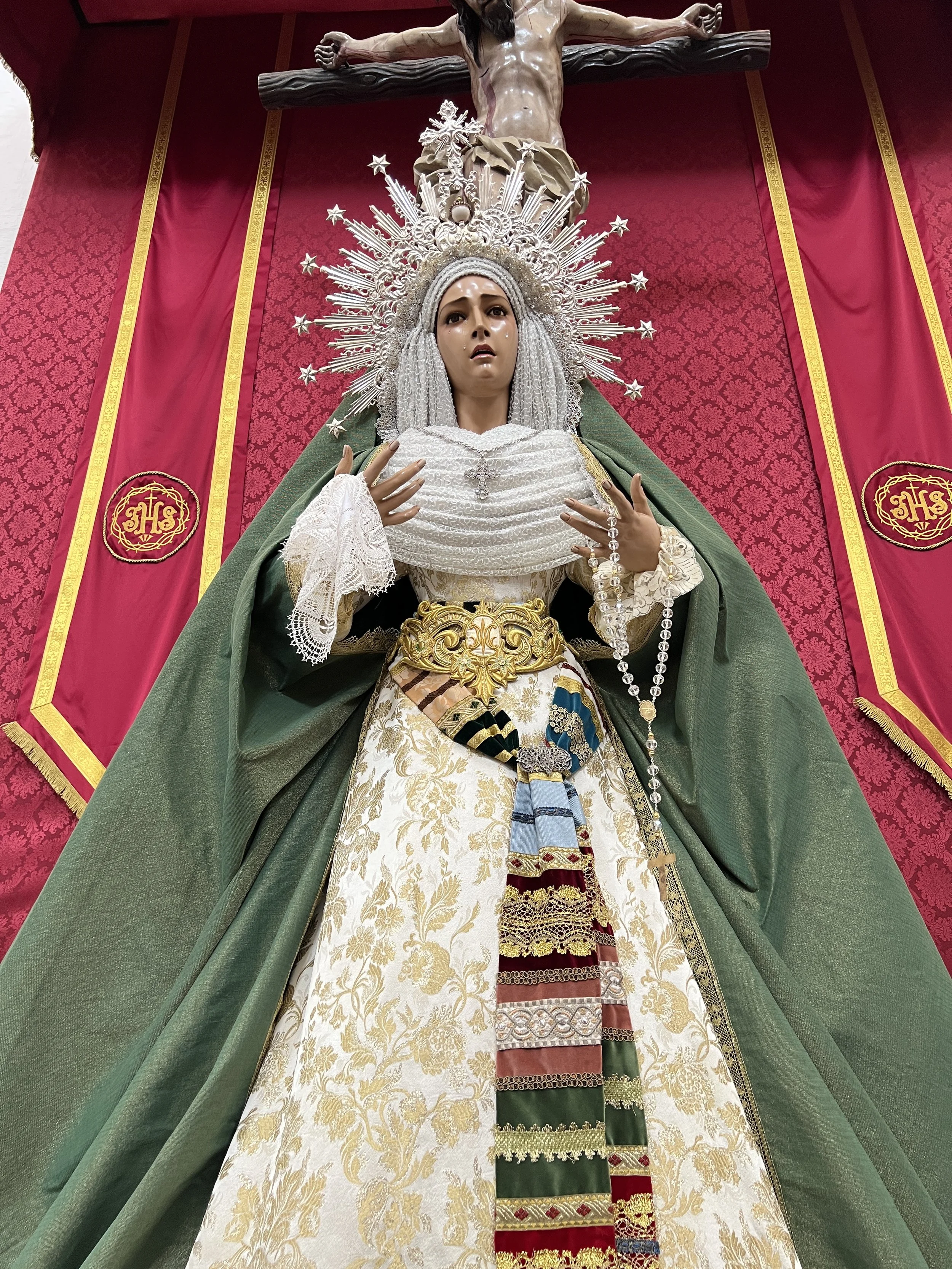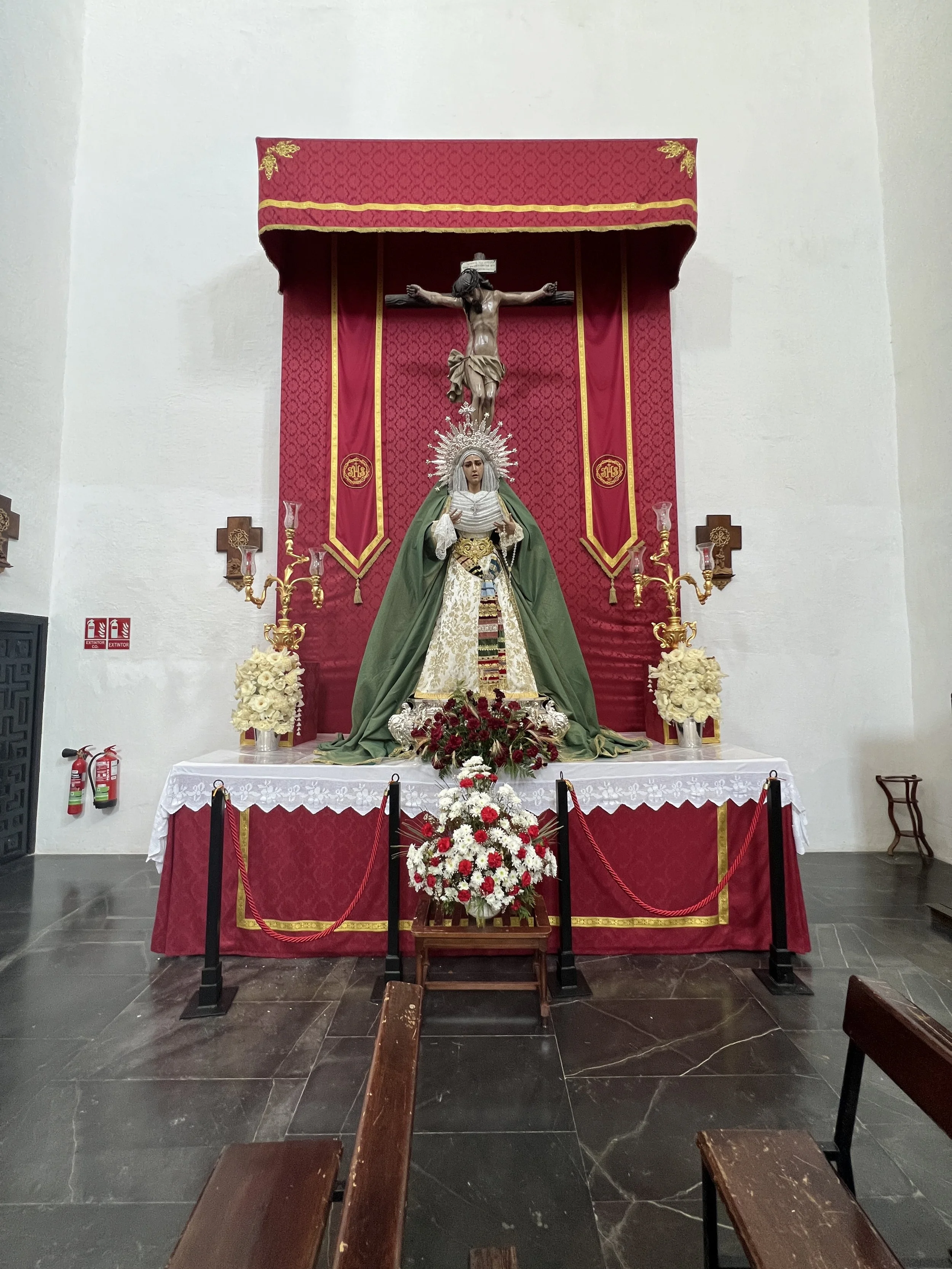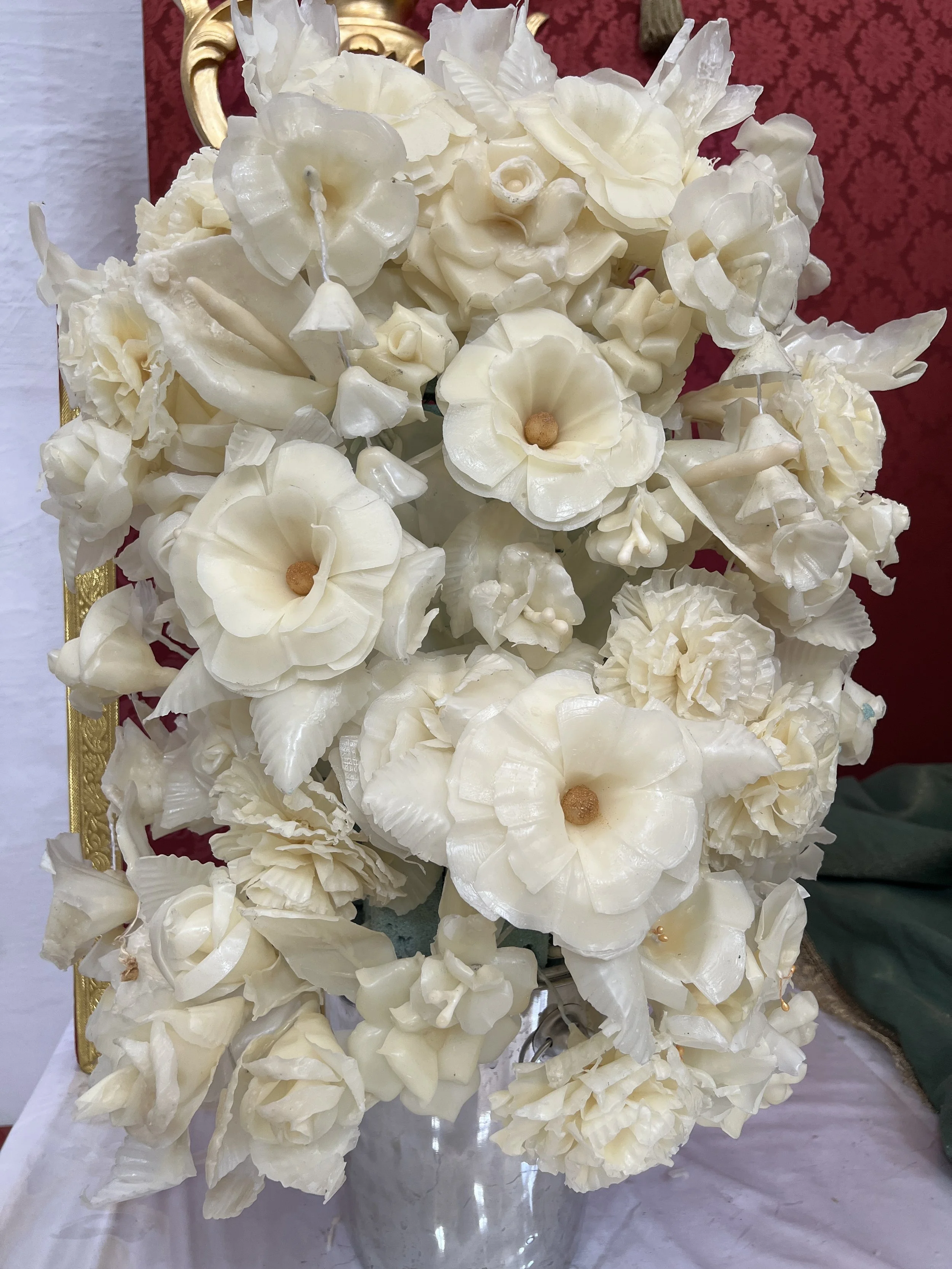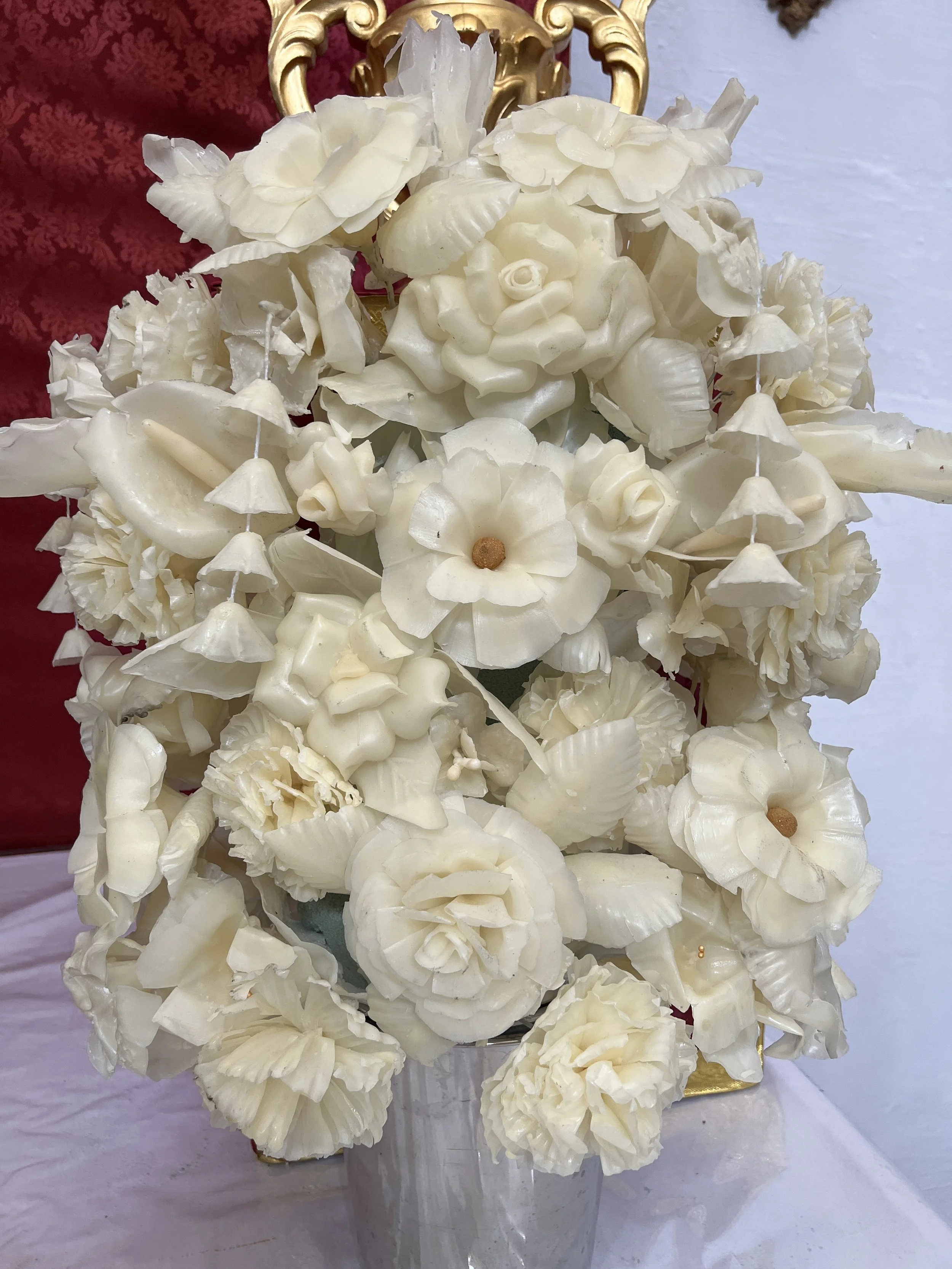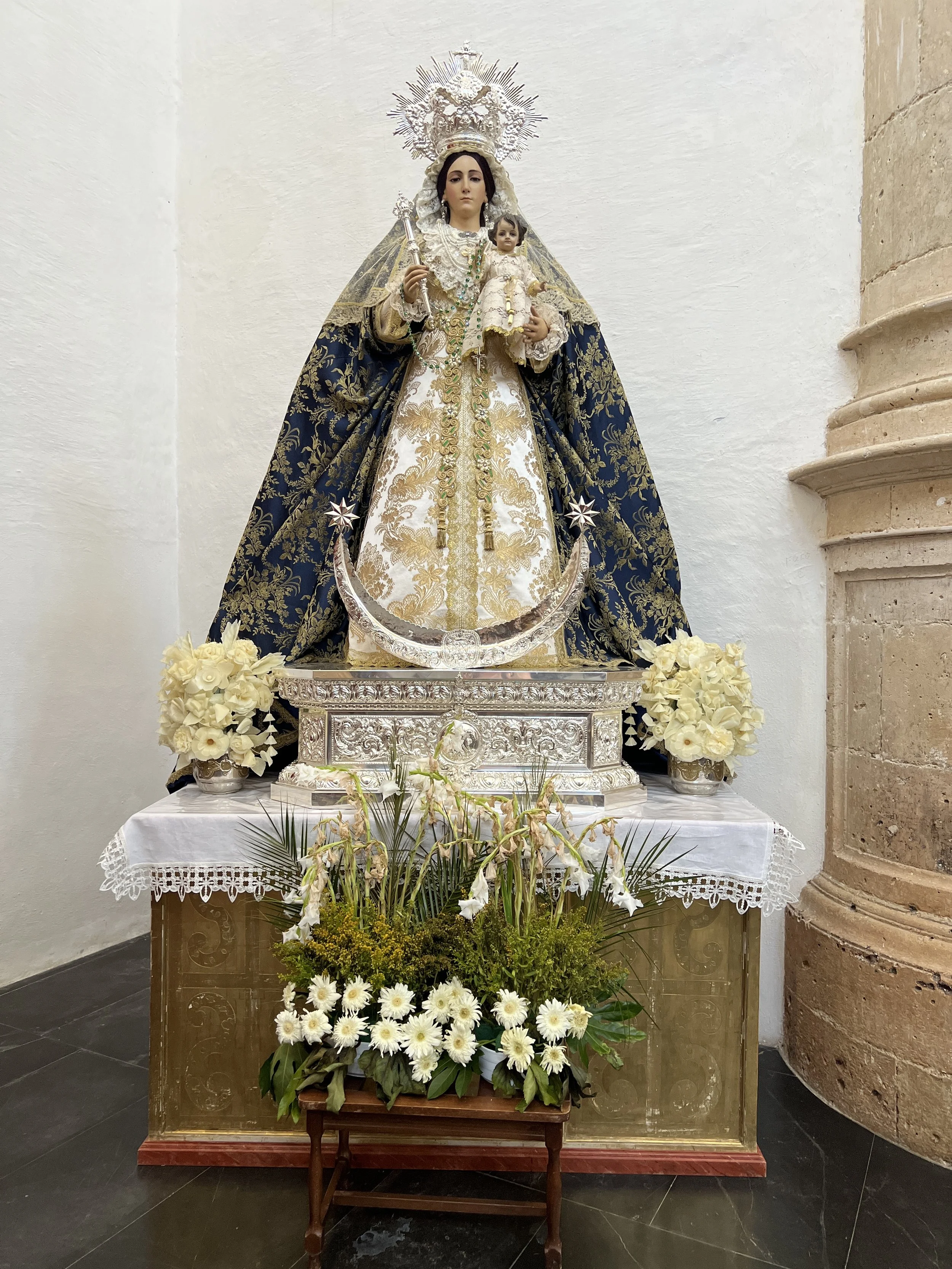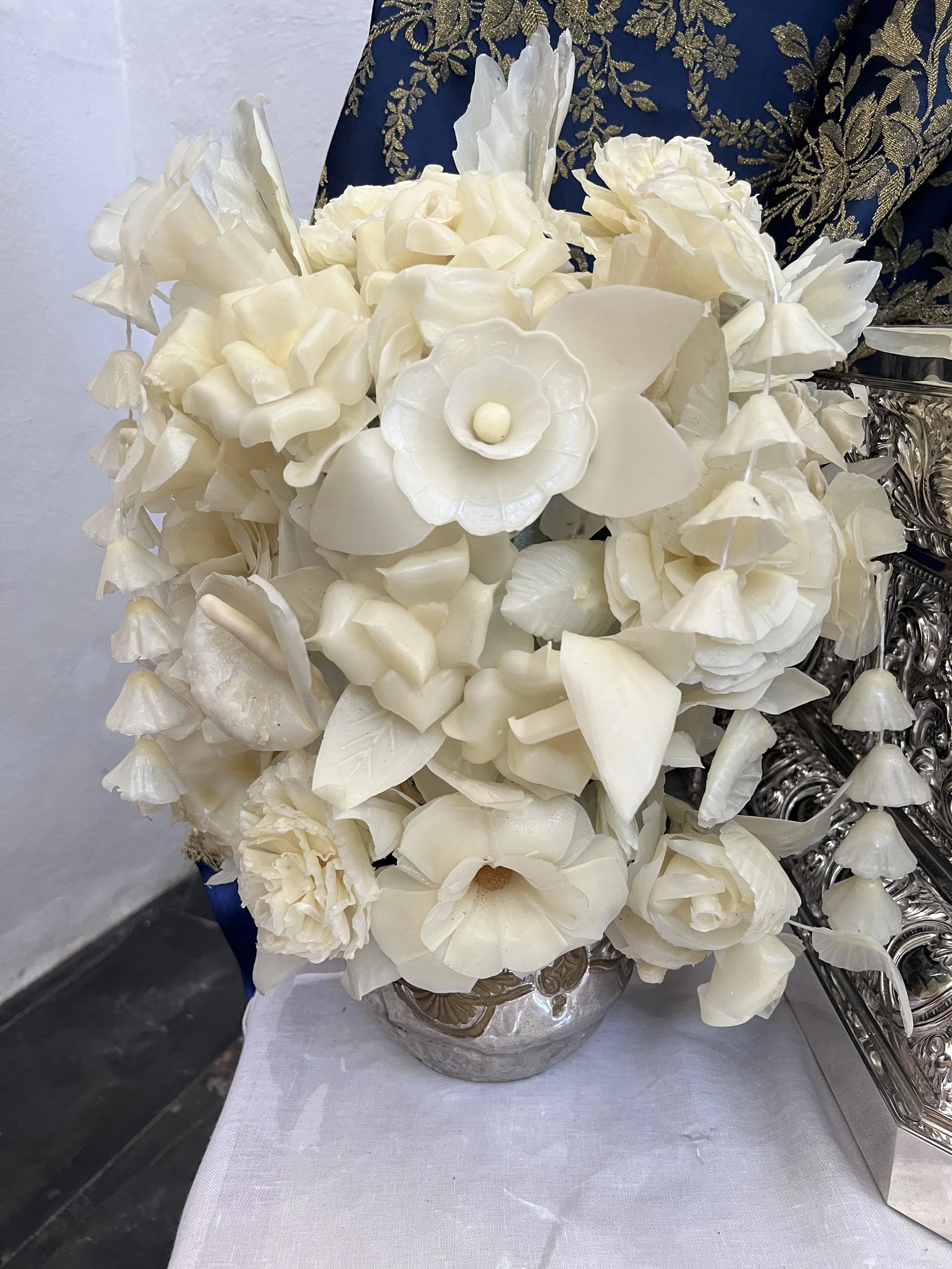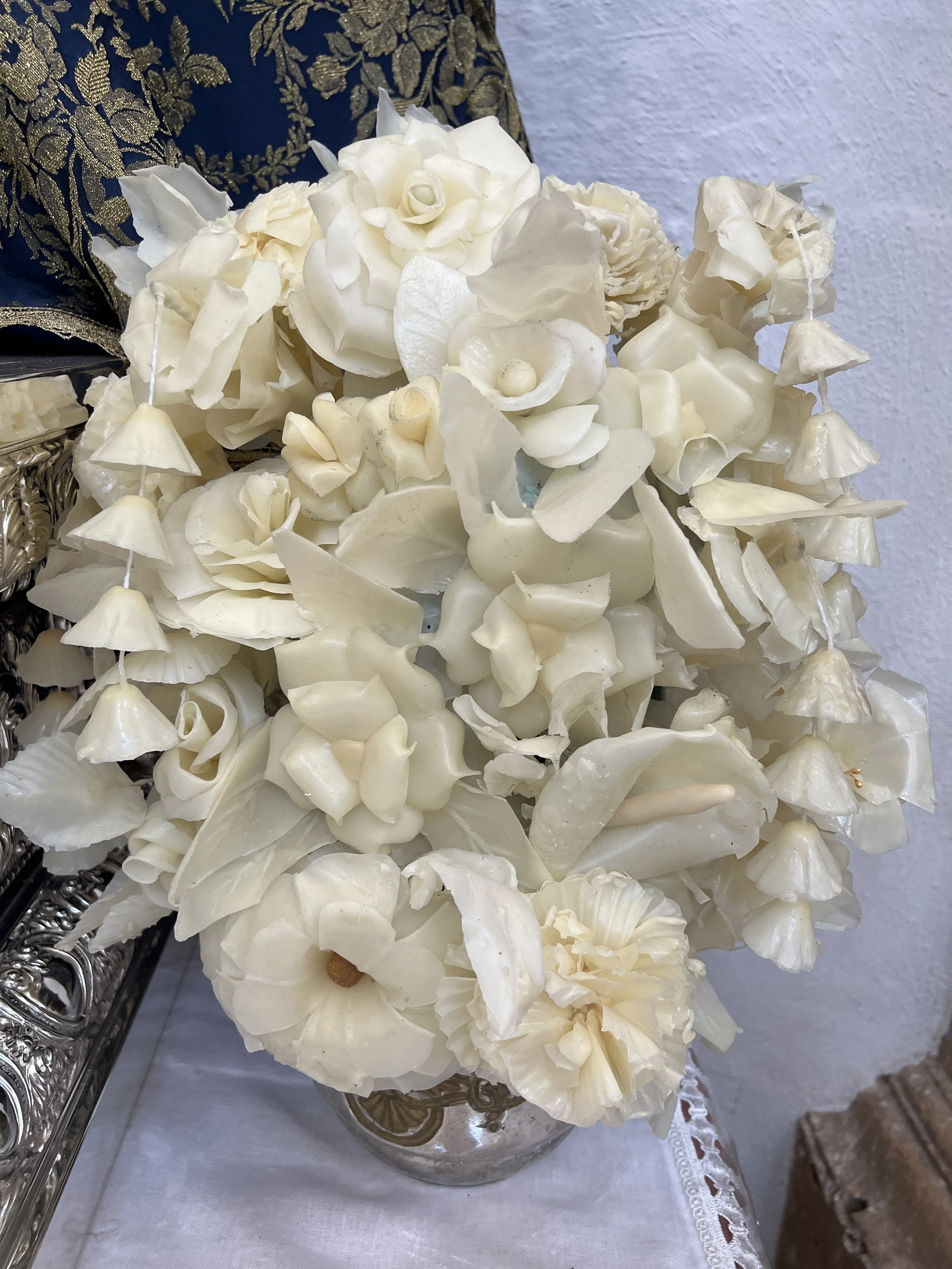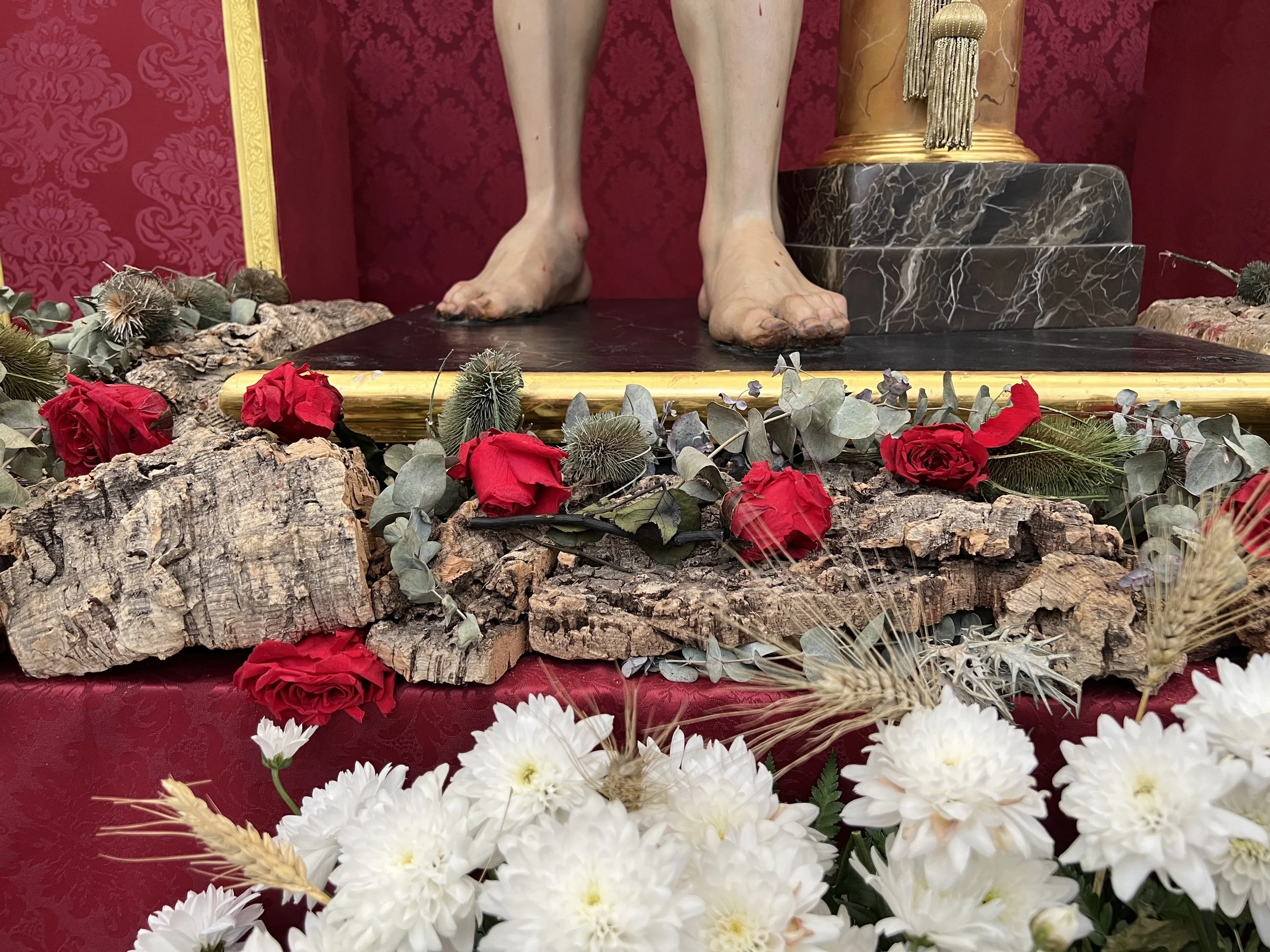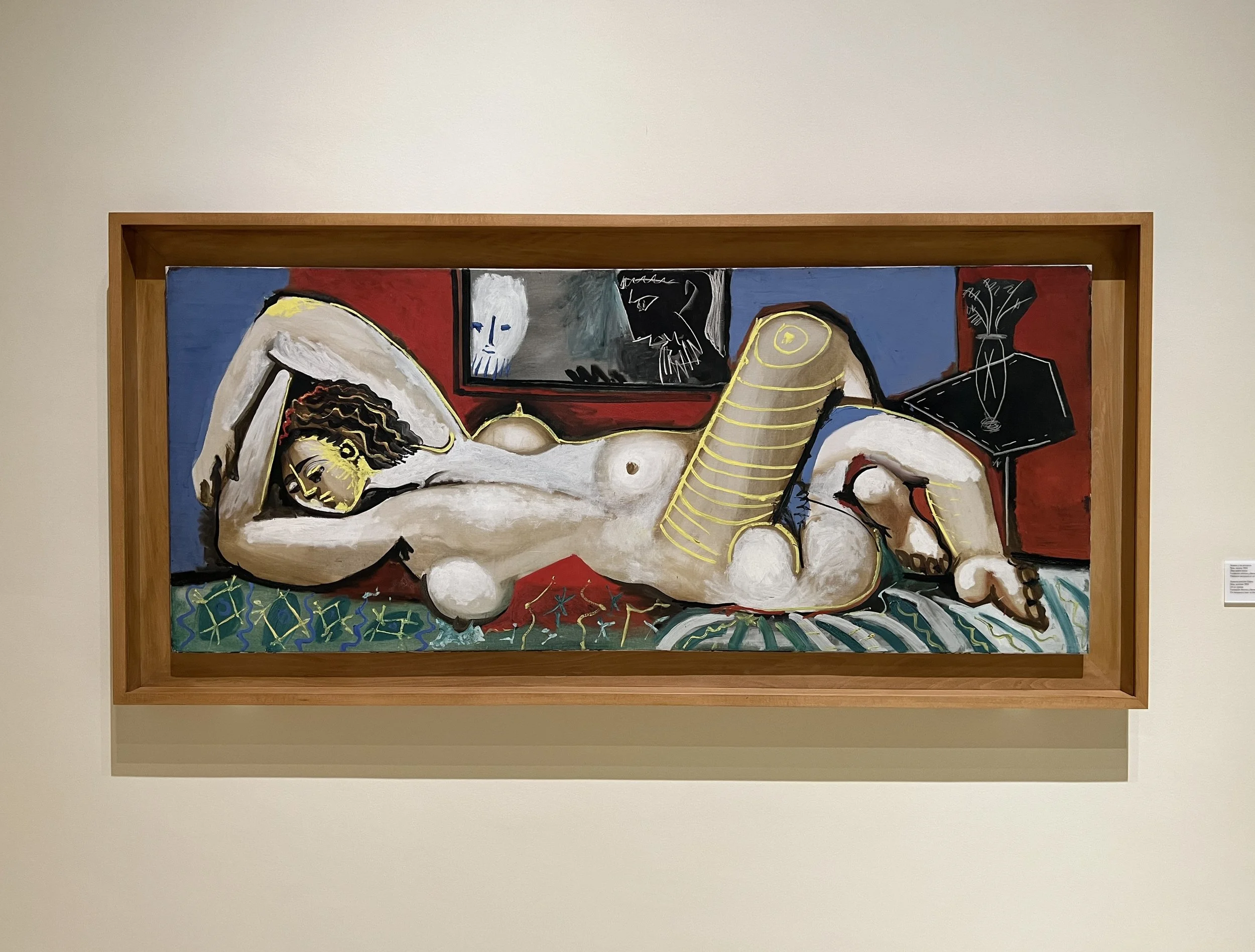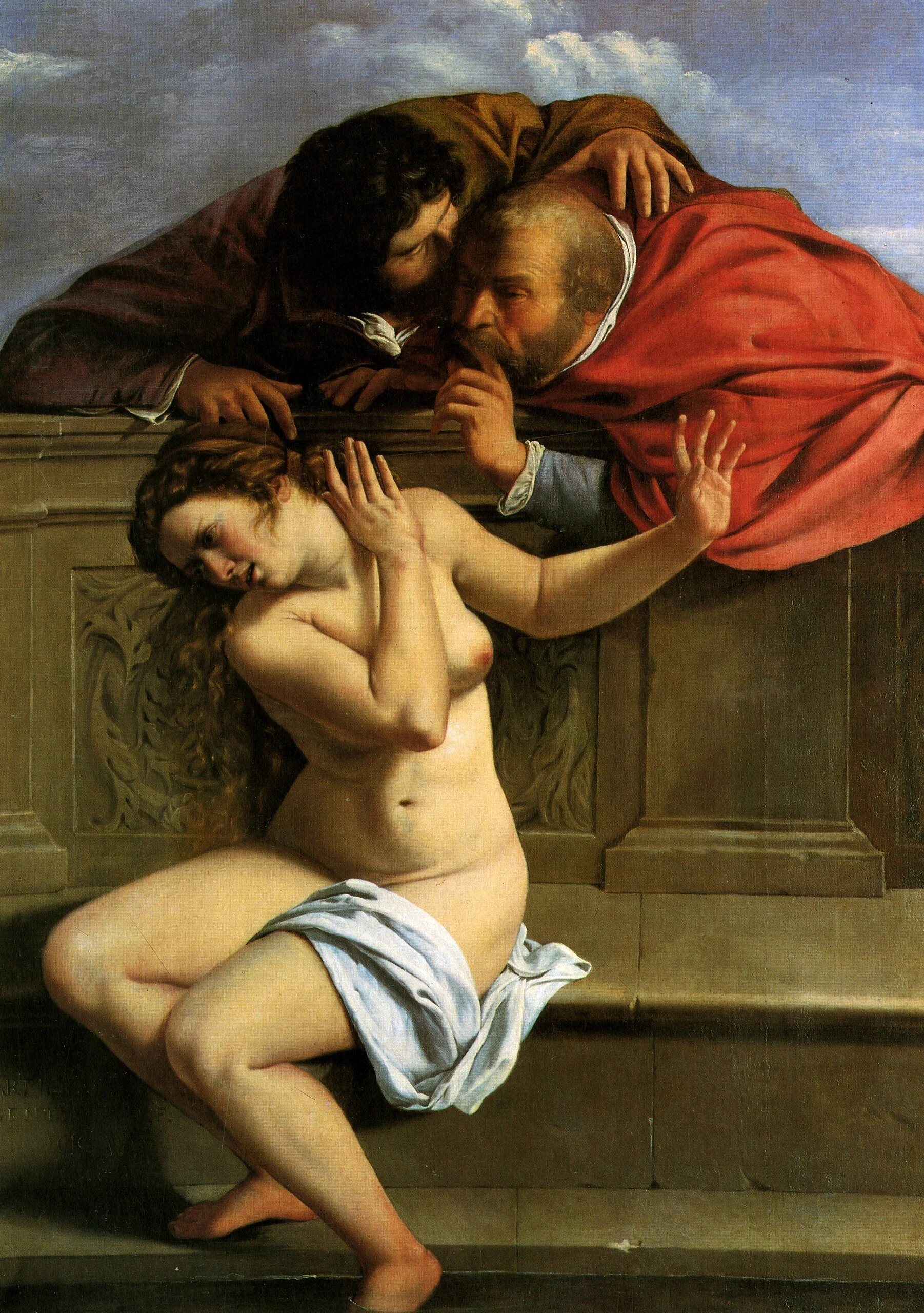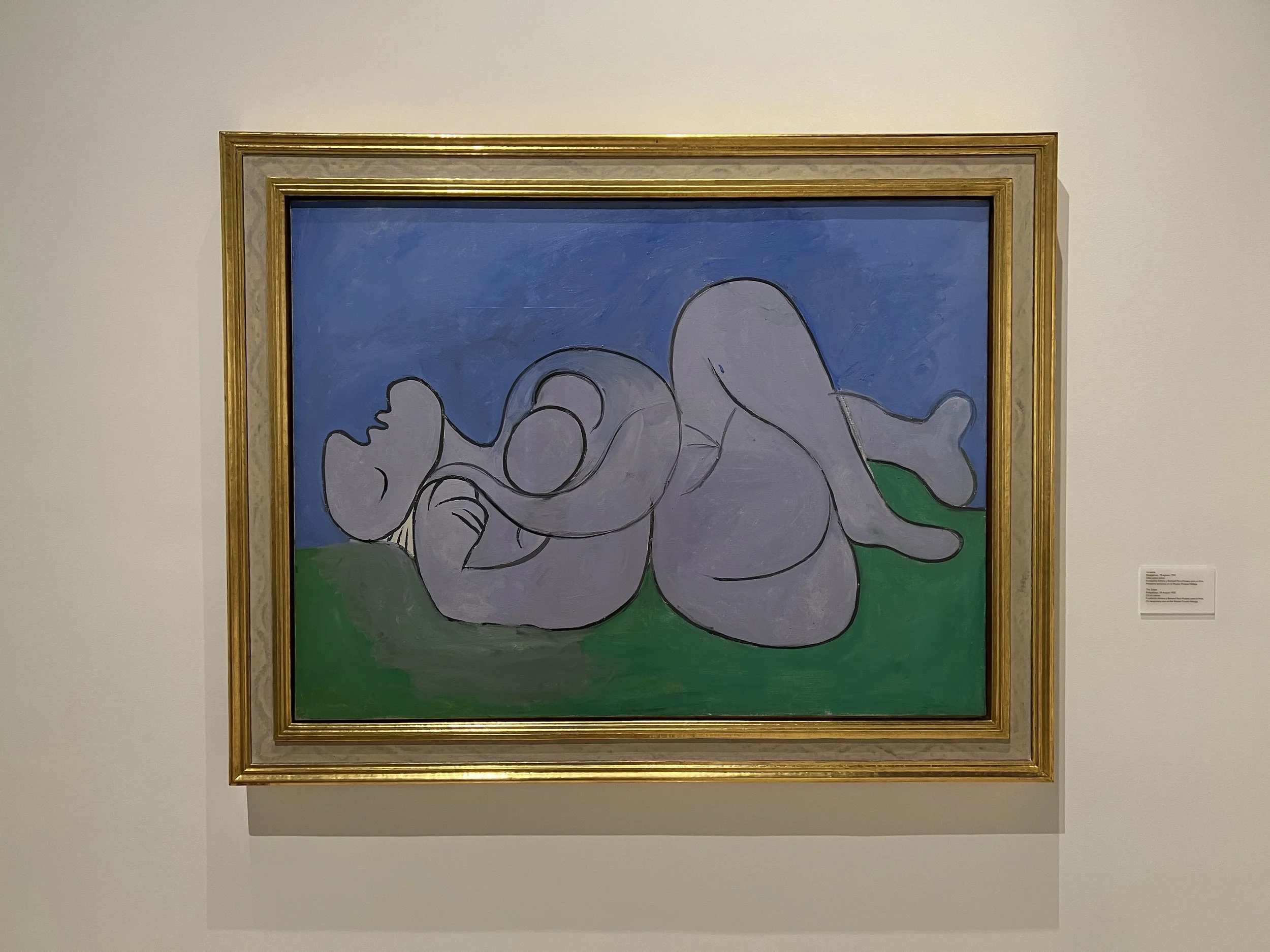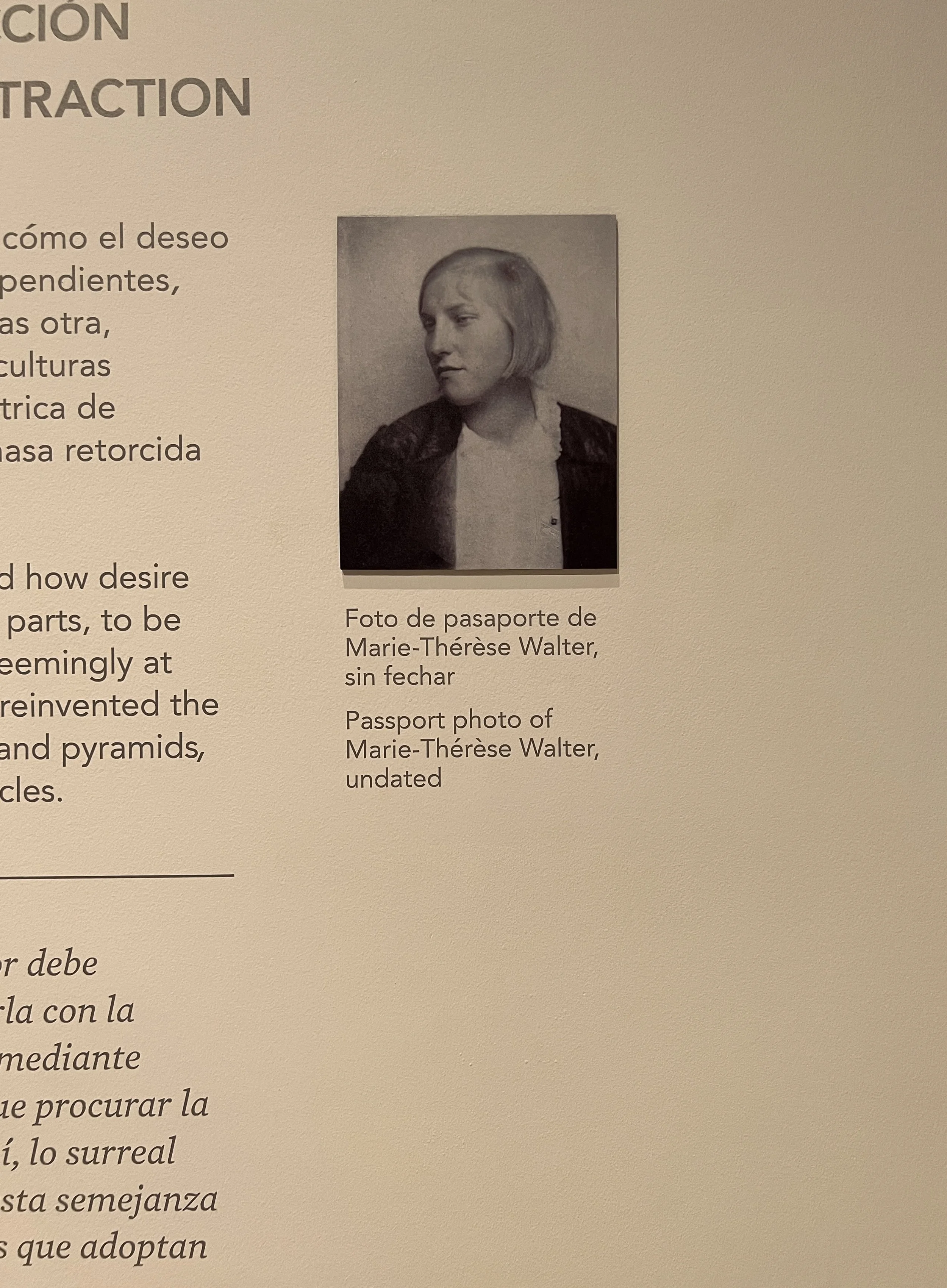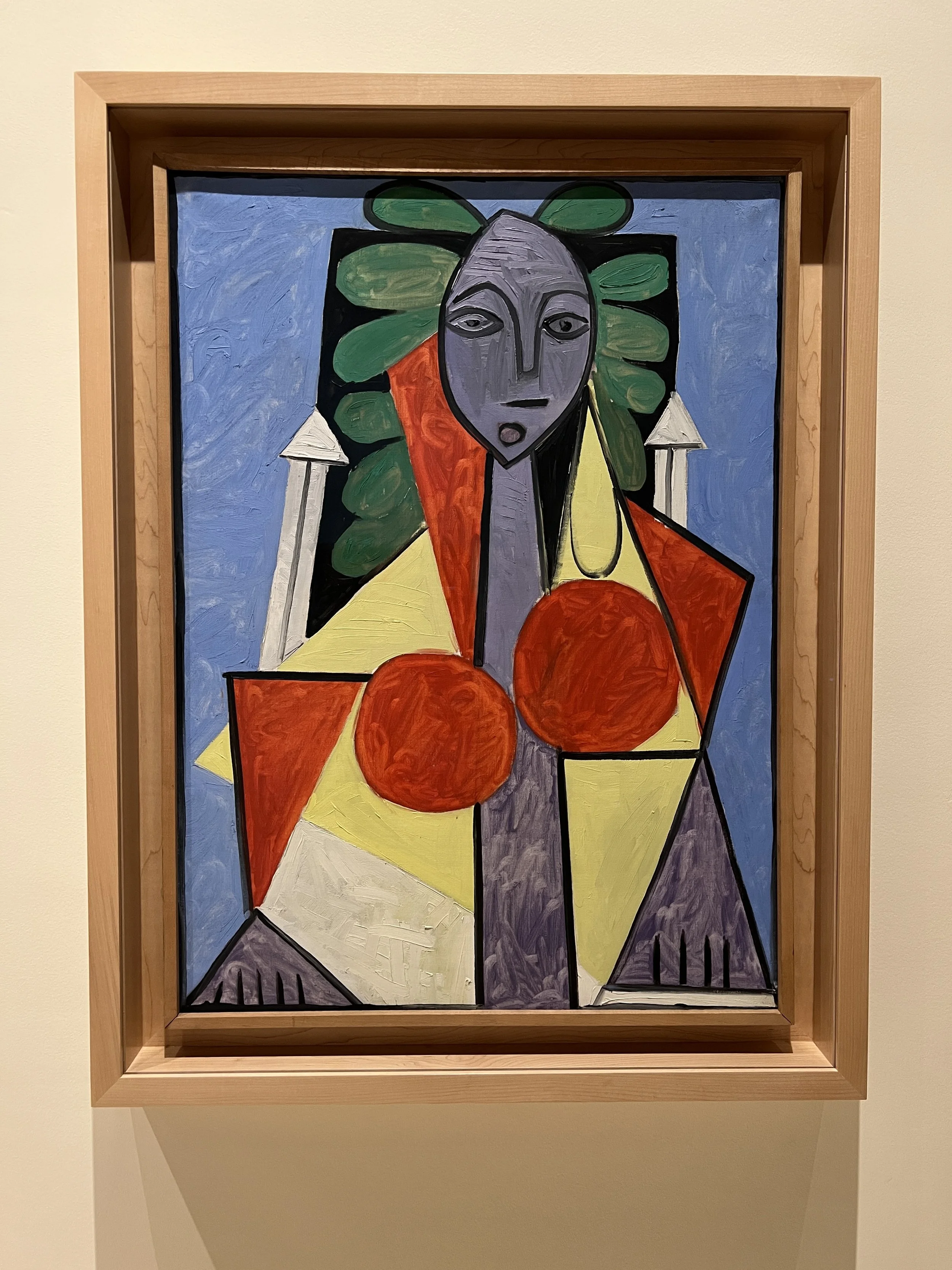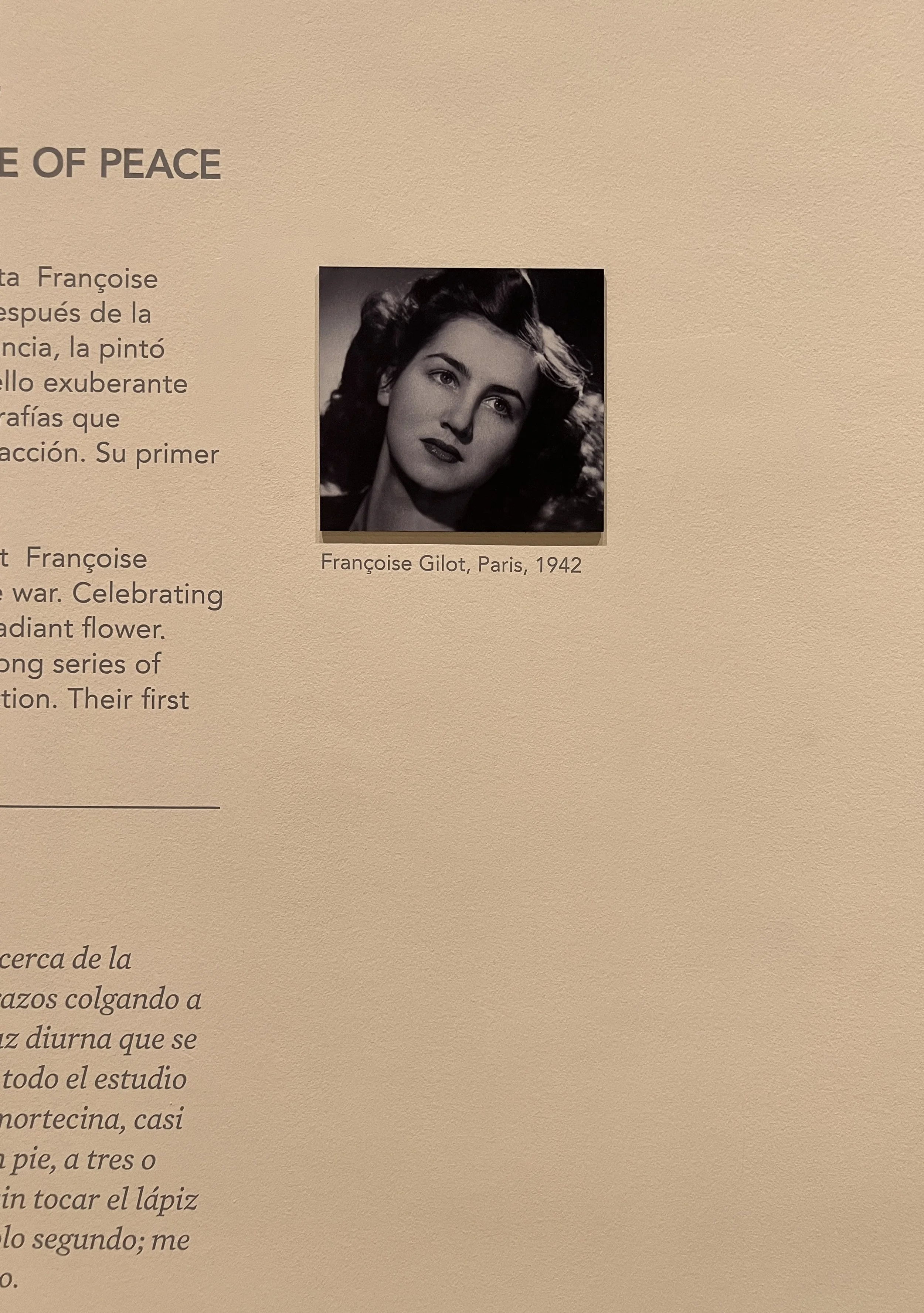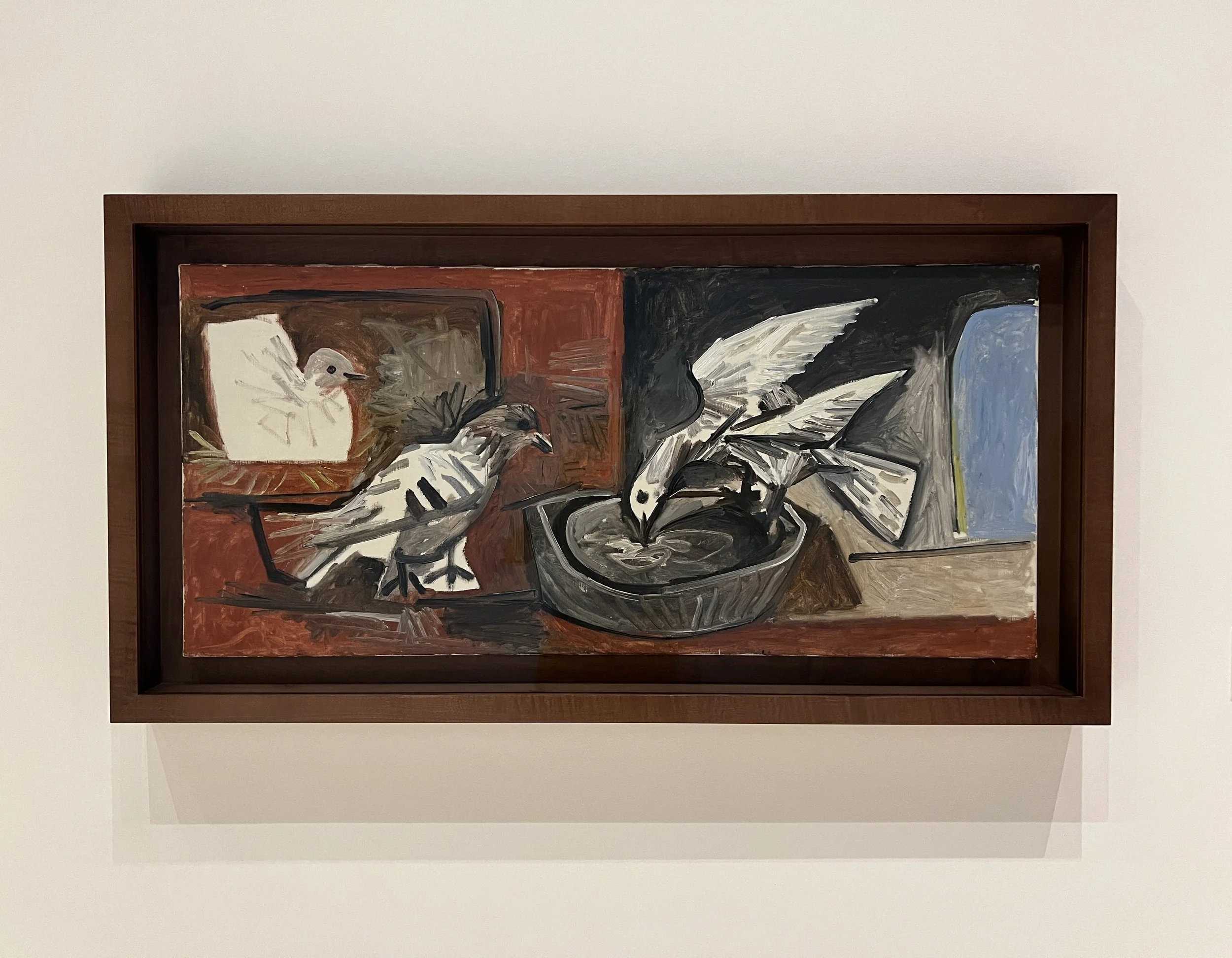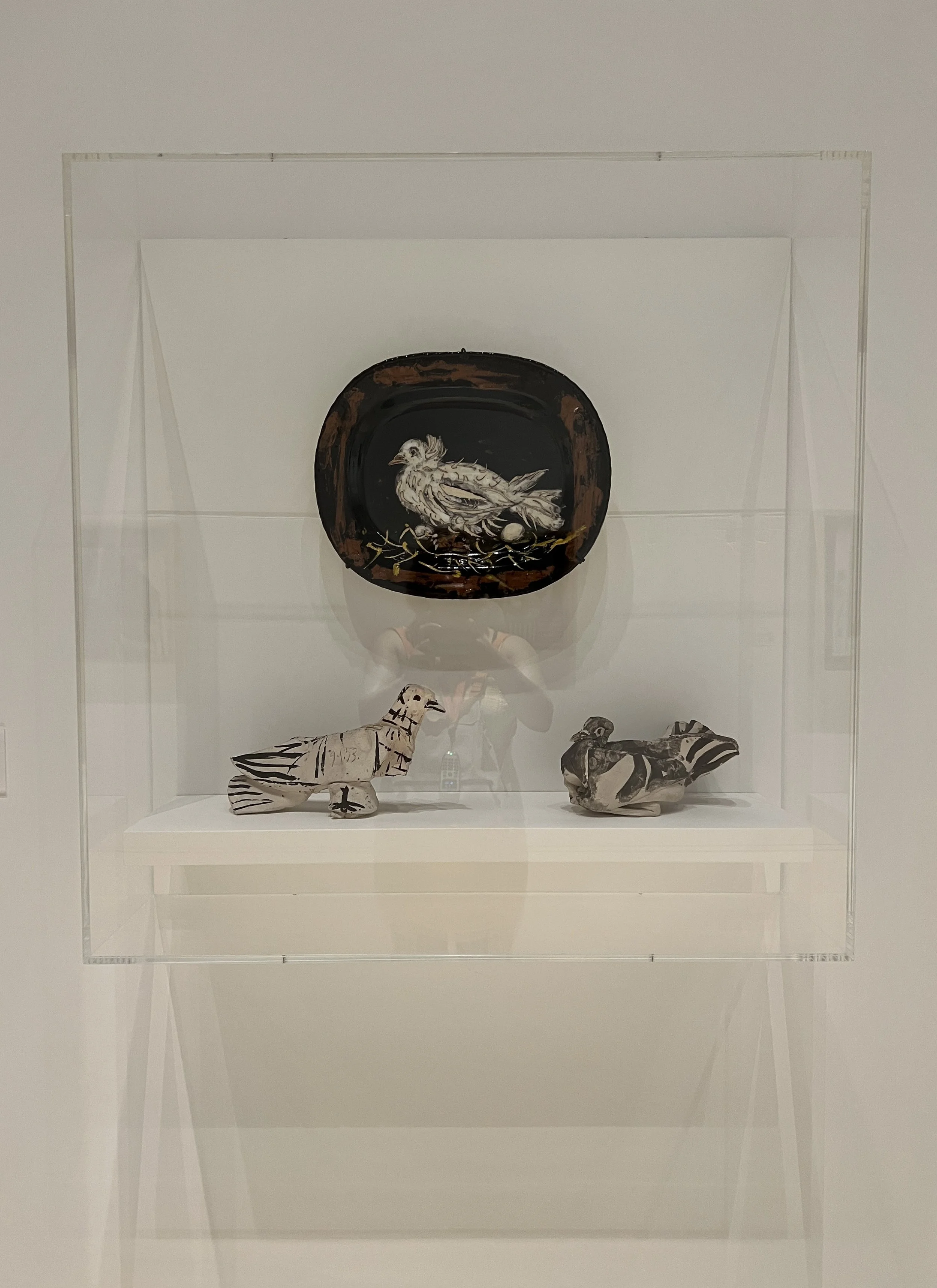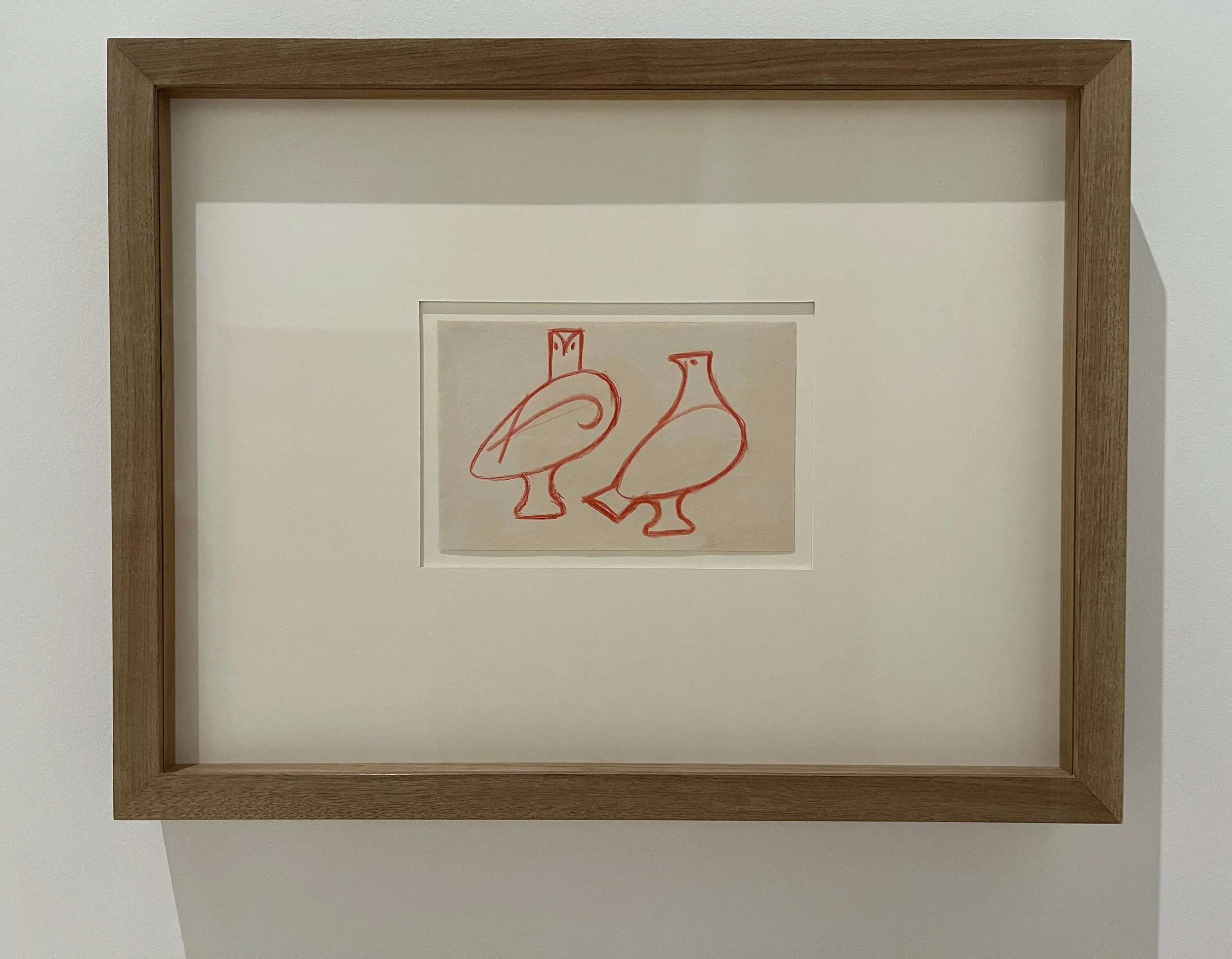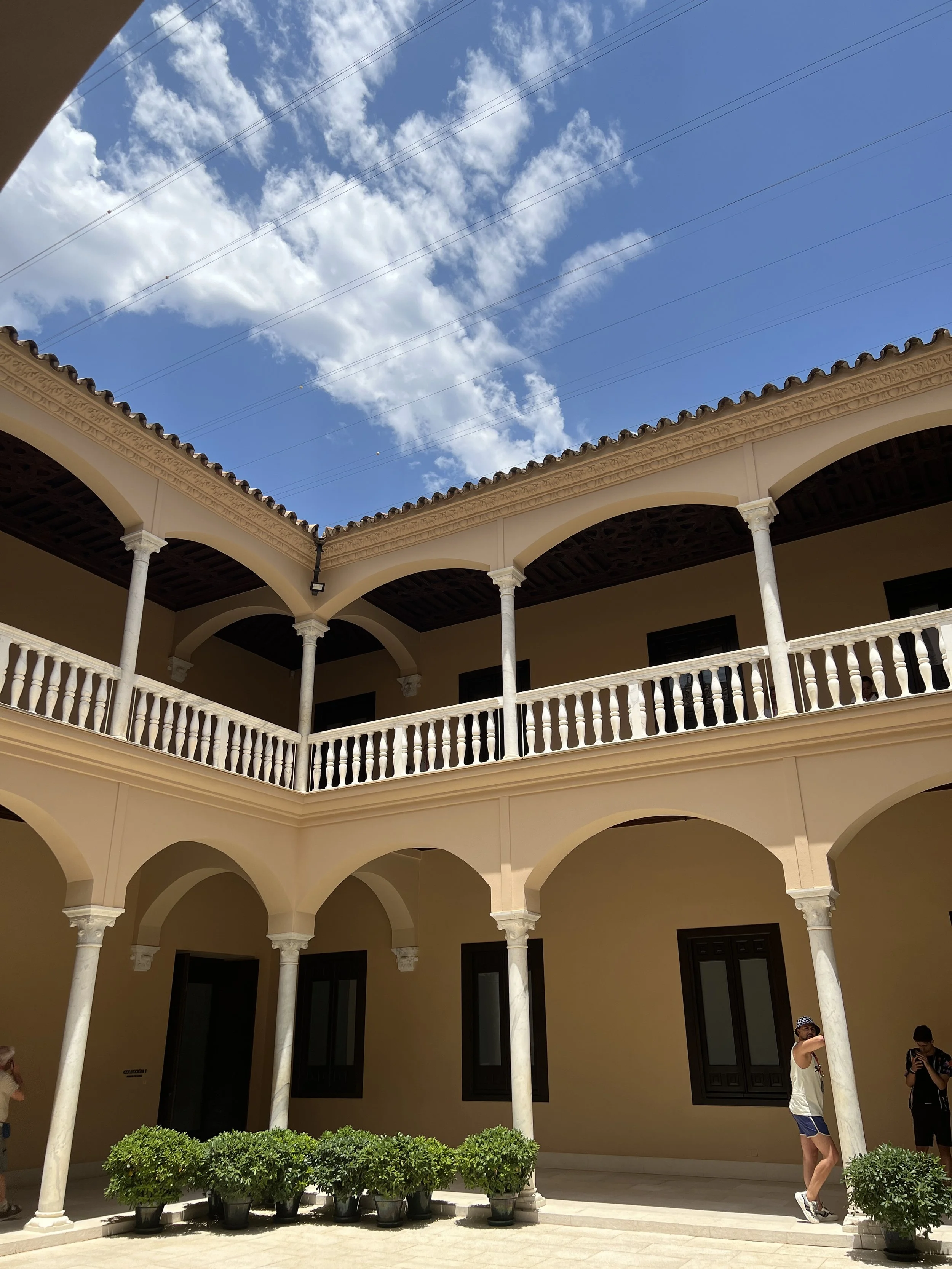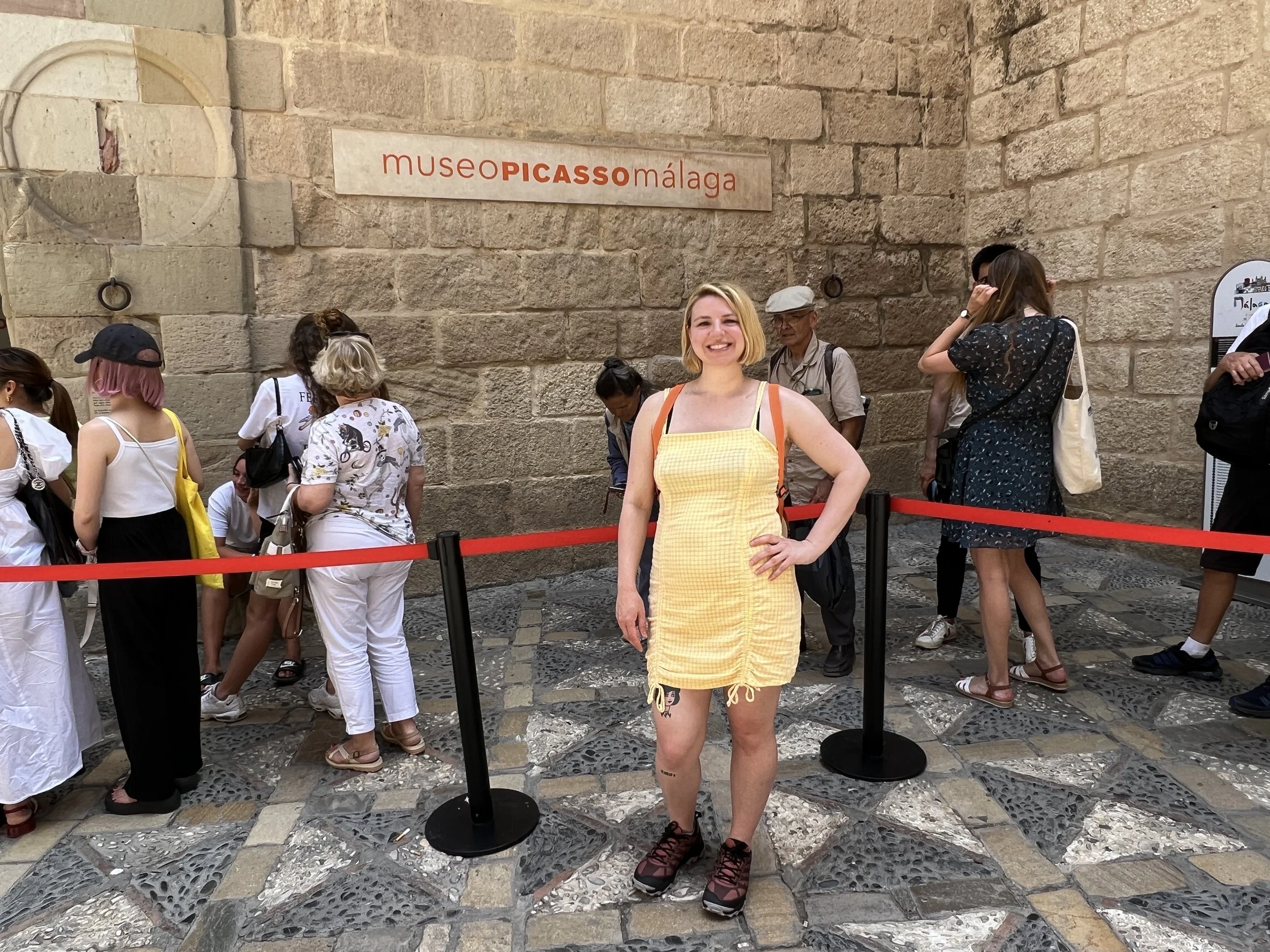Exploring Inspiration
In June, I visited Spain and found inspiration in unexpected places.
The Town of Setenil de las Bodegas
In terms of inspiration, visiting Spain unearthed a lot for me. It came to a head while visiting Setenil de las Bodegas, a small town built out of the cliffs of Southern Spain.
Steep, cobblestone streets in Setenil de las Bodegas. All streets lead up to the highest point of Nazari Castle.
Homes and shops carved into the cliffs of the town of Setenil de las Bodegas.
Homes and shops carved into the cliffs of Setenil de las Bodegas.
The inside of a shop in Setenil de las Bodegas has a ceiling and back wall made from the surrounding cliff itself.
On assignment to find visual inspiration that could be added to a painting of my own design as a final project for the eight-day painting workshop I spent with artist Elly Smallwood, I went off exploring Setenil with the hope of finding inspiration that was “Spanish” (i.e. Spanish tile; the patterns of Flamenco dresses, etc), but instead, I found myself drawn to something rather surprising.
Out on my own, I found myself walking into Nazari Castle, atop a very steep hill - the highest point in the town.
Nazari Castle, located at the highest point of Setinil de las Bodegas, Cadiz, Spain. The castle contains the adjoined Parroquia de Nuestra Señora de la Encarnación.
The bell tower at Nazari Castle.
Close up of the bell tower at Nazari Castle.
Nazari Castle, with its bell tower and adjoined Parroquia de Nuestra Señora de la Encarnación, sits atop the highest point in Setenil de las Bodegas, Cadiz, Spain.
Adjoined to Nazari Castle is the Parroquia de Nuestra Señora de la Encarnación, which translates in English to the “Parish of Our Lady of the Incarnation.” It was originally Moorish but is now a Christina parish. In similar fashion to many churches, there are detailed statues of Jesus and Mary, each surrounded by elaborate embroidery, pattern work, and bouquets of faux floral arrangements and wax flowers.
Within the Castle, I found a familiar beauty and comfort that surprised me to feel five thousand miles away from home. I grew up with churches as part of my life. It always strikes me how going into a church, even one so far away, can bring me back home.
I am no longer religious. I grew up Roman Catholic, but have shed the beliefs as an adult. Catholicism as a practice does not agree with my viewpoints, values, and lifestyle, and really no other religious practice has appealed to me since then.
However, there are many years of living within the practice that make up my childhood, and therefore, those years have shaped part of who I am. It was the consistency of that practice - and the people I loved who were connected to it - that make it hard to not feel a piece of home surrounded by Madonna figures and the quiet, towering walls of age-old churches.
Statue of Jesus within the Parroquia de Nuestra Señora de la Encarnación.
Close up of a statue of Jesus within the Parroquia de Nuestra Señora de la Encarnación.
Painted pattern work on the robe of the statue of Jesus within the Parroquia de Nuestra Señora de la Encarnación. Pattern work typically inspires me, especially if it is pattern work that I would describe as “folk” (in this case, marked by simple, linear patterns, designs, or line work that typically stem from a traditional cultural root). The Parroquia de Nuestra Señora de la Encarnación is now a Christian parish, though it was previously Moorish, and this pattern work is likely a combination of Spanish, Moor, and Arabic influences.
Close up of painted pattern work on the statue as well as a stigmata piercing made on the statue’s foot. Stigmata is the word used for the sores left behind on Jesus’ hands, feet, and side from his crucifixion. The wound on his side is from a spear used to pierce his ribs. Stigmata are accepted as holy symbols, and are said to appear, and even bleed, on the hands, feet, and side of Saints and very holy people.
Growing up, I was blind to images of violence within the Catholic church, and how gory the images could be. Most churches contain a central statue of Jesus - nailed to a wooden cross and dying - as the central statue portrayed for the congregation. When isolated out as a single solitary image - and especially for people who do not know the back story - it can seem quite gruesome. These statues, present in front of entire Catholic church congregations, are generally not age-restricted. The congregation - including families and children of all ages - are allowed to see them. In my adult life, this notion of uncensored crucifixion is one that - upon reflection, and past the blind acceptance of in childhood - both confuses and disturbs me.
Recently, I was talking with an art historian friend of mine in order to try to unpack the visual impact Catholic images have had on me. My friend, Leanne Gilbertson, is a retired art history professor and the only Andy Warhol scholar in the state of Montana, having worked at and with some of the most prestigious collections of Warhol’s work, such as the Whitney Museum in New York City and the Andy Warhol Museum in Pittsburgh. In my last job of Curator of Education at the C.M. Russell Museum in Great Falls, Montana, she and I did a project together when a small collection of Warhol’s Western-themed screen prints came for exhibition. She also curated an exceptional exhibition of Andy Warhol’s polaroids and silver gellatin prints at the Northcutt Steele Gallery in Billings, Montana, which I drove over two hundred miles to see. She is a superb art historian outside her knowledge of Warhol, of course. And, probably most important, besides a scholar, she is a generally wonderful person, and a supreme friend.
Our friendship is why I felt safe sharing with her - during an afternoon chat a few weeks ago - how I am struggling with the influence of Catholic imagery within my artwork.
I shared how it is interesting to me that Catholic images of torn flesh - the stab wound in Jesus’ side; the stigmata in the hands and feet; how he hangs, dying, on a cross - are considered appropriate imagery for public view, when it is actually quite dark and gruesome. She asked me if I had a chance to work this out in my art. I answered, “not yet.” I am not sure that I have worked it out yet completely in my art, though my drawings portray fragmented, severed, and torn bodies, at times. In a way, I am also working it out here, in writing.
Art historians are interesting people. They study artists for a living. They find how artists work and their inquisition of the world as a worthy pursuit of academic study. When I’m with Leanne, my questioning feels like something of value.
When I think of the religious symbolism of the stigmata and of Catholic church statues, I do not condone it. But on the other hand, it is interesting to me.
Stylistically, the images and statues found within Catholic practice interest me. The blood; the open wounds meant to symbolize someone’s love. The halos; the faux flowers; the mother figures. There is symbolism there for me, too, but perhaps not in the same way as a for a religious person, and certainly not with the same meaning. I don’t want to be confused by anyone as being Catholic, or even religious, despite the inspiration I draw from its symbolism. But what I want to work it out: The symbolism means something to me, and it’s relatable because I know it. It has affected my life in ways that are both good and bad. Honestly, I don’t really know how it precisely influences me, but I do know that I would like to keep processing it and its impacts.
Wide-angle lens view of the alter at Parroquia de Nuestra Señora de la Encarnación.
A Madonna figure at La Parroquia de Nuestra Señora de la Encarnación. The first thing that drew me to this figure were the tears on her face, as well as her open hands and distraught expression. I am often inspired by the sadness women hold within them, and this figure encompasses that for me. Next were the vibrant, Eastern European (at least what I associate as) folk colors of red and green. The statue’s sash is likely a mix of Spanish, Moor, and Arabic influences, though I was pulled in by what might be described in America as a “bohemian” or “gypsy” collection of fibers sewn into one belt. In the Western United States, we have called woven waist sashes like this Métis sashes, of the Métis people, who are a combination of Native American and French ancestry. The third thing that stood out to me was the gold embroidery on her robe; I am often drawn to the patterns and craftsmanship of embroidered adornments.
A full view of the Madonna statue, showing her form flanked by two bouquets of wax flowers.
Close up of a wax floral bouquet flanking the Madonna statue at her right side. I found each of the individual wax flowers to be beautiful and unique.
Close up of wax floral bouquet flanking the Madonna statue at her left side. I found each of the individual wax flowers to be beautiful and unique.
Another Madonna figure. Similarly, I found inspiration in the golden embroidery of her garments. She is also flanked by bouquets of wax flowers, which I found especially intriguing during my visit to the parish. The lines of faux daisies beneath her feet add an element of devotional whimsy. Often, I find comfort in the practice of paying respect in the form of object adornment using floral motifs. As a society, it is a method we use to pay tribute to beauty, holiness, and love. Frequently, I lay floral adornments for loved ones and deceased members of my family next to their photos or in places they loved. Many people find comfort in this practice, and it is a practice that causes me pause and intrigue, while simultaneously filling me with emotion, love, and the feeling of spiritual connection.
Close up of a wax floral bouquet flanking the second Madonna at her right side. I found each of the individual wax flowers to be beautiful and unique.
Close up of wax floral bouquet flanking the second Madonna at her left side. I found each of the individual wax flowers to be beautiful and unique.
Crushed rose and other faux floral arrangments beneath the feet of a statue of Jesus.
Pablo Picasso, Catholicism, and Women
Later on, I found serendipitous alignment in my thoughts on Catholic imagery in artwork as they relate to feminist ideals while listening to The Great Women Artists Podcast, featuring novelist, essayist, and author, Siri Hustvedt. Hustvedt’s writing on art often focuses on the fate of women artists in history; the gender biases of making history; and the likes of female artists such as Artemesia Gentileschi and Louise Bourgeois. In her podcast interview, Hustvedt discusses Pablo Picasso and his widespread acceptance as an “art hero.” Hustvedt believes Picasso is praised far too much for his greatness, and she even wrote a review of the last volume of John Richardson’s biography on Picasso. While Hustvedt concedes that Picasso was a gifted artist and presented an original style, conversely she notes that he painted women in a way that was “as old as the hills,” by “taking classical subjects and subjecting them to modern innovation.” The female subject found in Picasso’s work is often treated as an “object of brutality and misogyny - [showcasing] the endless repetition of artist and model - with the female nude as passive - which has been celebrated - almost thoughtlessly - for decades.”
“Susana and the Elders”/”Susana y los Ancianos”, by Pablo Picasso, oil on canvas, 1955. On display at the Museo Picasso Málaga.
“Susana and the Elders,” by Artemisia Gentileschi, oil on canvas, 1610.
Perhaps grim, Hustvedt discusses and presents the long-standing critiques that female scholars have been pointing out in terms of “great” male artists for decades.
For example, Picasso’s version of “Susana and the Elders” while painted in a Modernist style (Cubist), follows a classical pose of a reclined woman in a passive nature: her eyes and face are looking away from the elders, who peer in on her from the window. Her arms are open, stretched revealingly over her head, almost as if she is inviting the suitors to look at her breasts. Her breast is erect and facing up toward the men, seemingly for their view and pleasure. Susana, in this painting, shows almost no fear or knowledge of their intention of rape. In fact, she seemingly invites their advances, as she lays on a soft, interior surface.
Conversely, we see the version of “Susana and the Elders” painted by Artemesia Gentileschi in 1610. Different, from her male contemporaries of the time, and of the male painters for centuries to come, Artemisia paints the heroine Susana in a dramatically different way. Susana shows no signs of comfort. Sitting on a hard stone bench, rather than a soft bed, Susanna twists away uncomfortably from the assailants, who loom above her. Her head and neck are bent away from the men in a nearly improbable, desperate fashion. As she shields herself from the men with her hands, her arms cover her breasts, which are pointed away from the men. “Susana’s raised arms, and pose, similar to the biblical heroine, say “no” to the would-be rapists,” as art historian Mary D. Gerrard points out in her book Artemesia Gentileschi and Feminism in Early Modern Europe. “With these compositional choices,” Garrard writes, “Artemesia changes the narrative focus from the men’s pleasure to the woman’s distress.” (Garrard, 74).
Pablo Picasso’s strict Catholic upbringing, and how he explored it deeply within his art, was a concept that Leanne Gilbertson introduced to me for the first time over our afternoon chat, ironically just days before I listened to Siri Hustvedt’s interview.
Leanne had asked me in our afternoon conversation if I had had a chance to look at any art or visit any museums while I was in Spain. Naturally, I told her that I visited the Museo Picasso Málaga, Picasso’s namesake museum in the city of Málaga, Spain, where he was born. One hundred miles away from Setenil de las Bodegas, I spent a week of my time in Spain taking in the city of Málaga outside of the time I spent in my painting retreat with Elly Smallwood.
My expression when talking about Picasso must have revealed a lot to Leanne about my artistic taste surrounding Picasso’s artwork. “It seems you don’t care for Picasso,” she said during our conversation. She could likely tell my feelings by my response to her, or the look on my face, or both. “Well,” I said, “he’s a male artist, and he’s a womanizer!” We both laughed.
“The Siesta” (“La Siesta”), by Pablo Picasso, oil on canvas, 1932. On view at the Museo Picasso Málaga. The French model - and lover of Picasso - Marie-Thérèse Walter, is painted in a classical reclined pose, despite a modernist approach. The pose of Marie-Thérèse Walter in this painting is a an example of the “male gaze.” In art history, the phrase “male gaze” is used to describe a scenario within the subject matter of an artwork that invites the sexualized gaze - on behalf of the viewer - onto a female model, form, or subject. In “La Siesta,” the woman is in a passive, non-threatening pose where she is effectively allowing her nude body to be gazed upon, looking away as if the viewer is not there and does not see her. Art historians, especially feminist art historians, find this type of pose problematic and one that creates an unfair balance of gender within the art world - where men are often the “experts” (the painters) and women are often the sexualized, passive “objects” (the models).
Copy of a passport photo of Marie-Therese Walter on display at the Museo Picasso Málaga.
“Woman in an Armchair” (“Mujer en un Sillón”), by Pablo Picasso, oil on canvas, 1946. On view at the Museo Picasso Málaga.
Copy of a photo of Francoise Gilot, an artist contemporary of Picasso; his partner for ten years; and Picasso’s model for “Woman in an Armchair,” on display at Museo Picasso Málaga.
One thing I found interesting about Pablo Picasso was his ability to achieve a likeness of his models within his paintings, despite a Cubist-Modernist approach. Most people commonly associate Picasso as an “abstract artist,” where the word “abstract” is meant to mean non-representational. In short, there is an assumption that his paintings do not look like his subjects. When, in fact, they are quite representational. Seen above in the paintings “La Siesta” and “Mujer en un Sillón,” there is a distinct likeness between the paintings and the photographs of the female models he portrayed.
Each geometric shape, or symbol, that Picasso chose in his paintings has a likeness to the features - such as the eyes, nose, and mouth - within the model that he represents within each painting. The final portraits, though Cubist-Modernist in design, have quite a similar likeness to the models. In fact, Picasso was very intentional with his symbolism and compositional choice:
“I always aim at the resemblance. An artist should observe nature but never confuse it with painting. It is only translatable into painting by signs. But such signs are not invented. To arrive at the sign, you have to concentrate hard on the resemblance. To me, surreality is nothing, and has never been anything but this profound resemblance, something deeper than the forms and the colors in which objects present themselves.”
Picasso and the Birds
Despite my relatively normal artist-feminist viewpoint of Pablo Picasso as a womanizer, I still found my visit to Picasso’s namesake museum in Málaga to be interesting. Leanne asked me about my experience, overall.
I told Leanne that what I found I mostly enjoyed were Picasso’s depictions of birds - the pigeons and the doves found in Picasso’s work - and the extensive number of artworks he made with birds as the lone subject matter.
I shared a story with Leanne of an art history class I took in college, with Anne Cushwa, my art history professor at the time. In Anne’s class, The Art of West Africa, she introduced the class to the Yoruba Tribe of West Africa. The Yoruba People are a matriarchal society which uses bird symbolism to represent the strength and power of women. I have since then never forgotten that or the class. The Yoruba People honor families through the mother, and the honor and power is seceded in each family through the Matriarchy - the power from mothers, aunts, sisters, and all women.
Feeling some embarrassment from telling an accomplished art historian what I learned in art history class in college, I mentioned to Leanne that she probably knew already of what I was speaking. Leanne, replying graciously, said, “Yes, birds are used quite often as a symbol throughout art history. “ I was excited and intrigued to know this and to learn more.
I found myself taking many photos of Picasso’s drawings and paintings of birds. The artworks weren’t his masterworks, by any means, but I likee them. Maybe Picasso is a feminist, after all.
“Tres Palomas” (“Three Doves”), by Pablo Picasso, oil on canvas, 1960. On view at the Museo Picasso Málaga.
“Paloma” (“Dove”) (top), by Pablo Picasso, ensized earthenware painted with slips and enamels and glazed, 1949. “Paloma” (“Dove”) (bottom left), by Pablo Picasso, modeled earthenware painted with slips and enamels and glazed, 1953. “Paloma” (“Dove”) (bottom right), by Pablo Picasso, modeled earthenware painted with slips and enamels and glazed, 1953. On view at the Museo Picasso Málaga.
“Pájaros, estudio para una cerámica” (“Birds, study for a ceramic”), by Pablo Picasso, red pencil on paper, 1946-1947. On view at the Museo Picasso Málaga.
The Picasso Museum of Málaga
Courtyard inside the walls of the Museo Picasso Málaga.
Standing outside the Museo Picasso Málaga. The museum is a popular tourist destination, and I waited in line outside the museum for one hour before I was able to enter.
